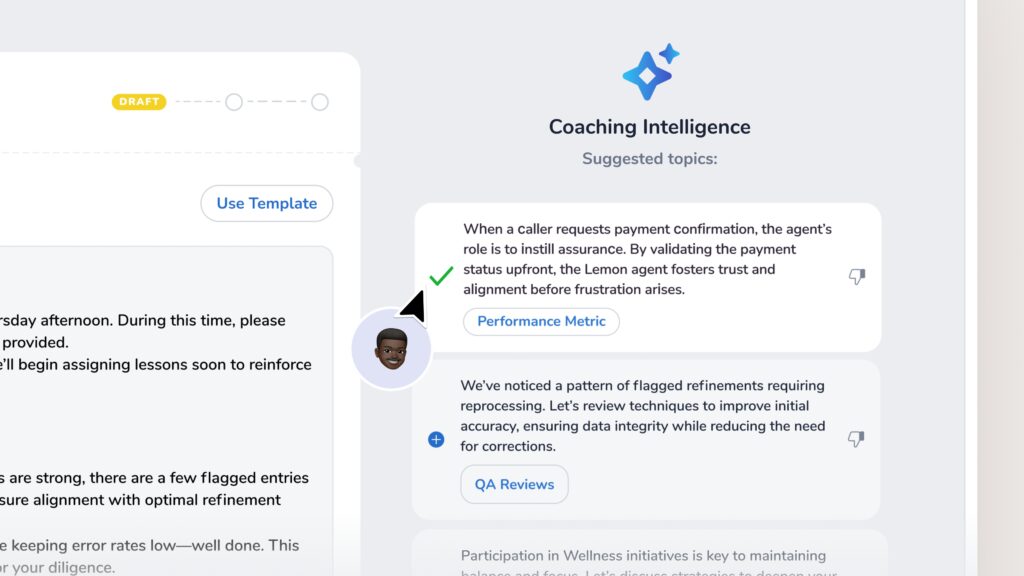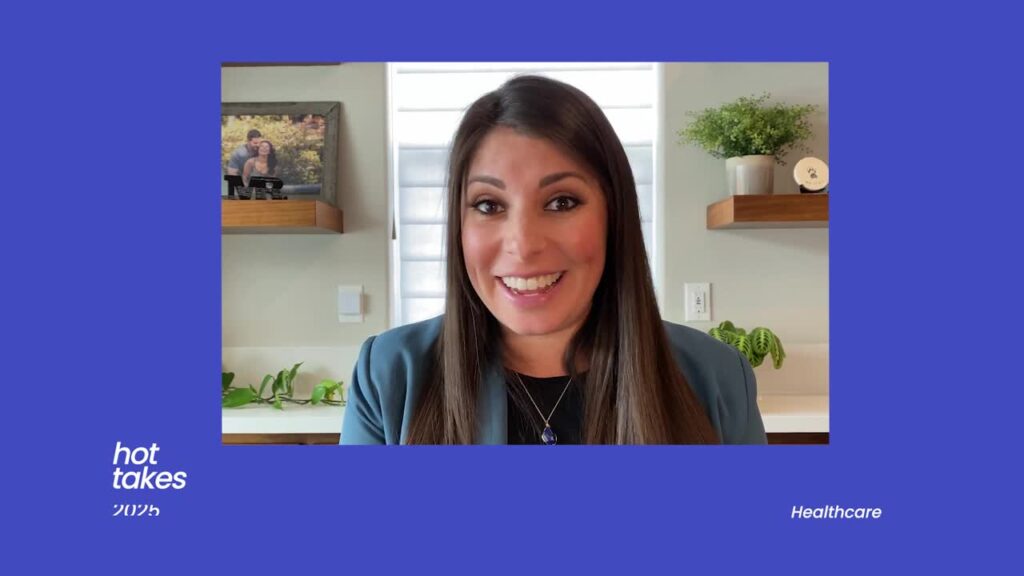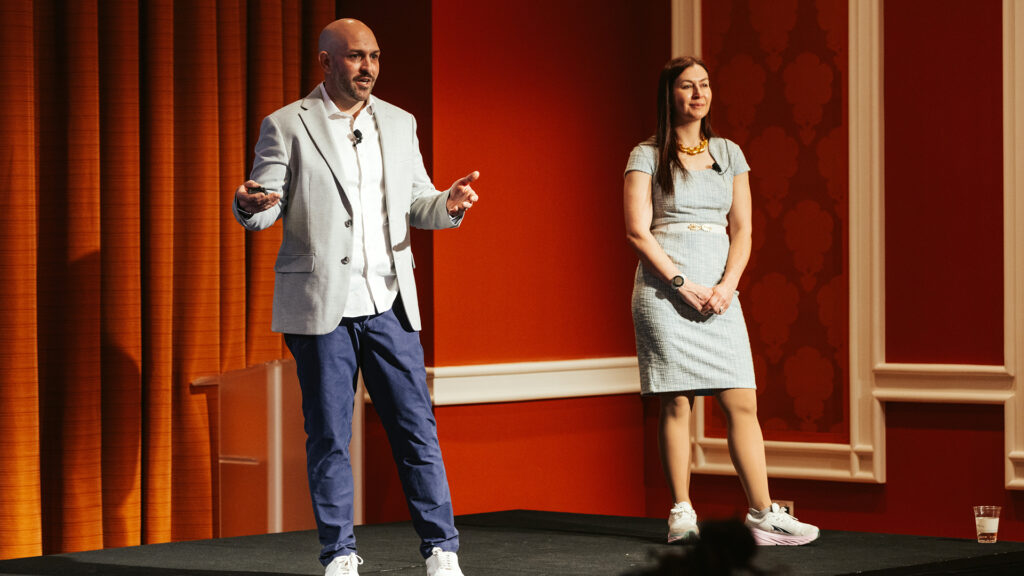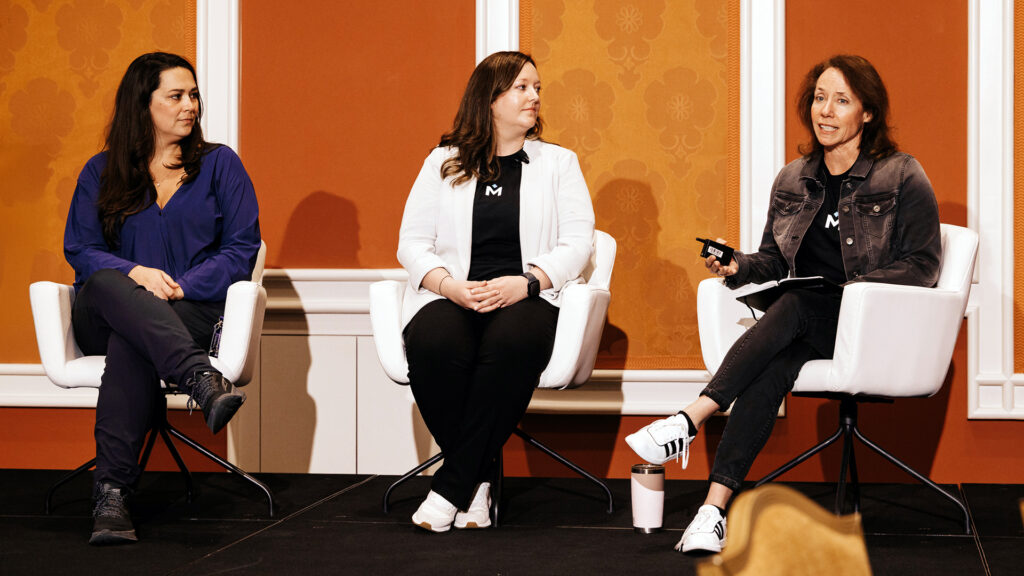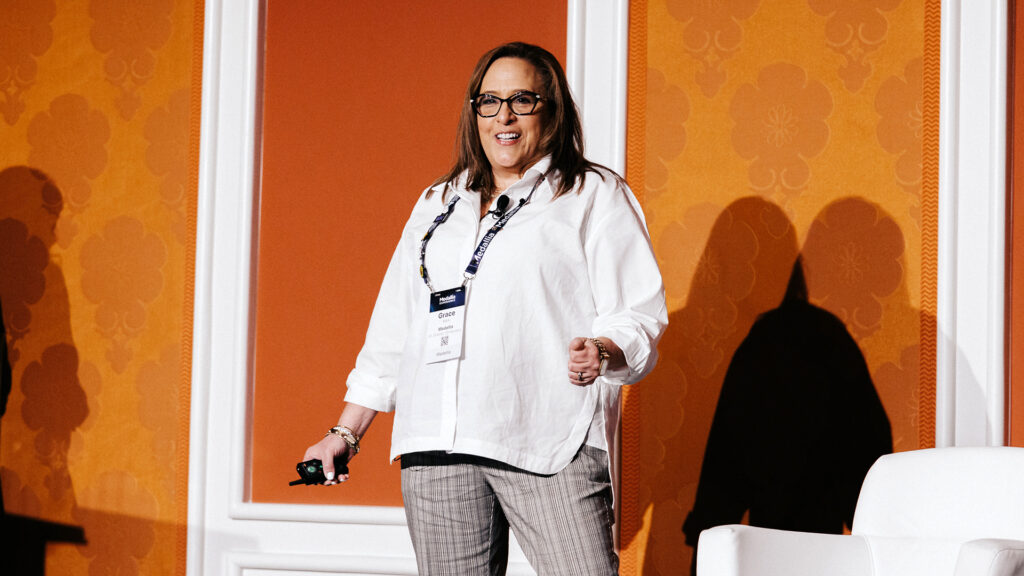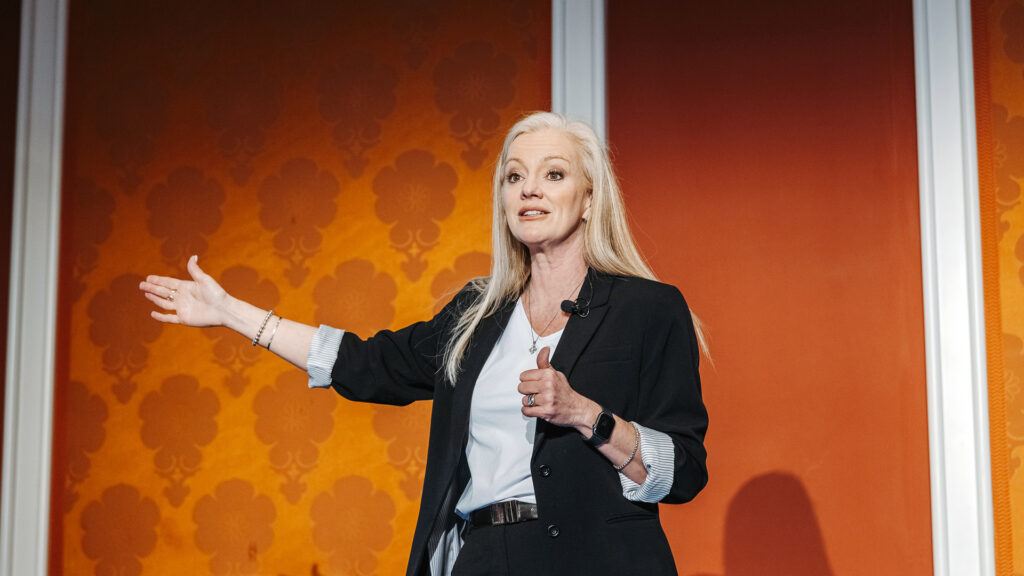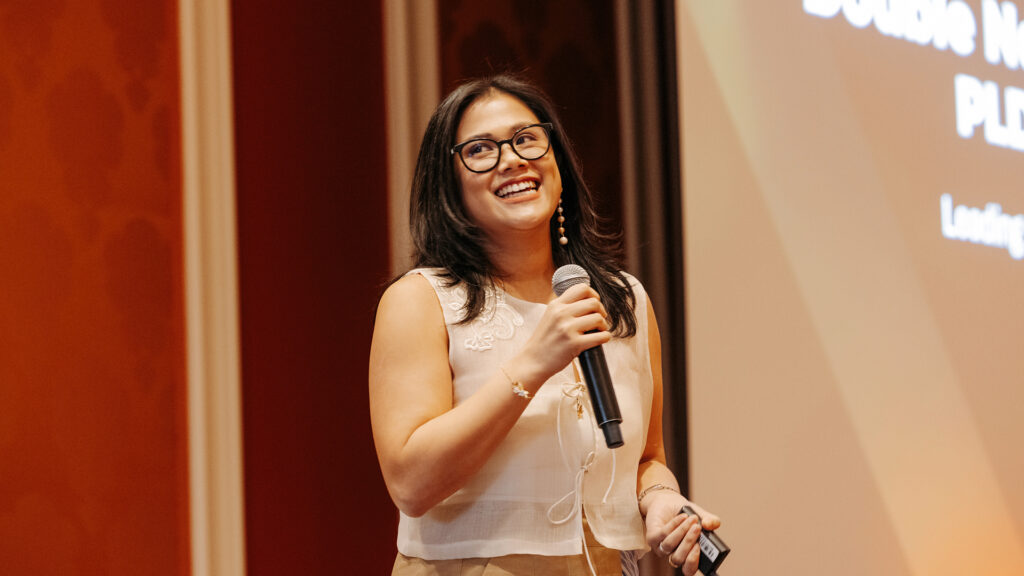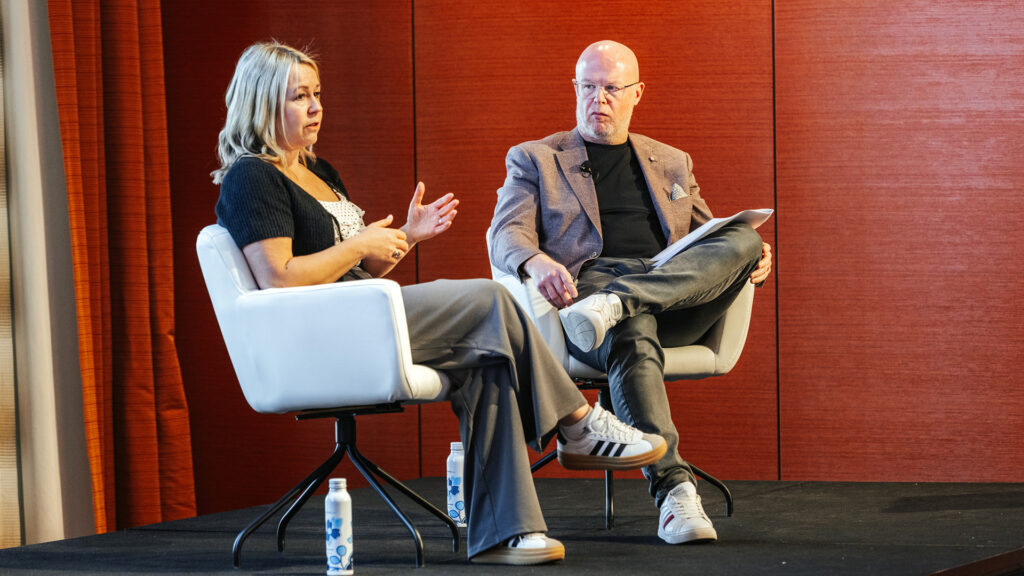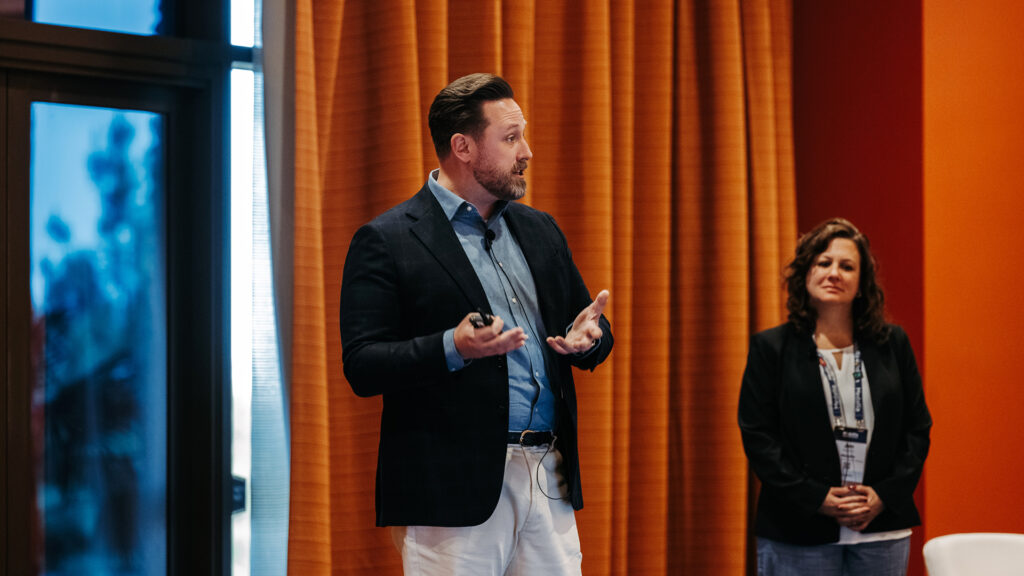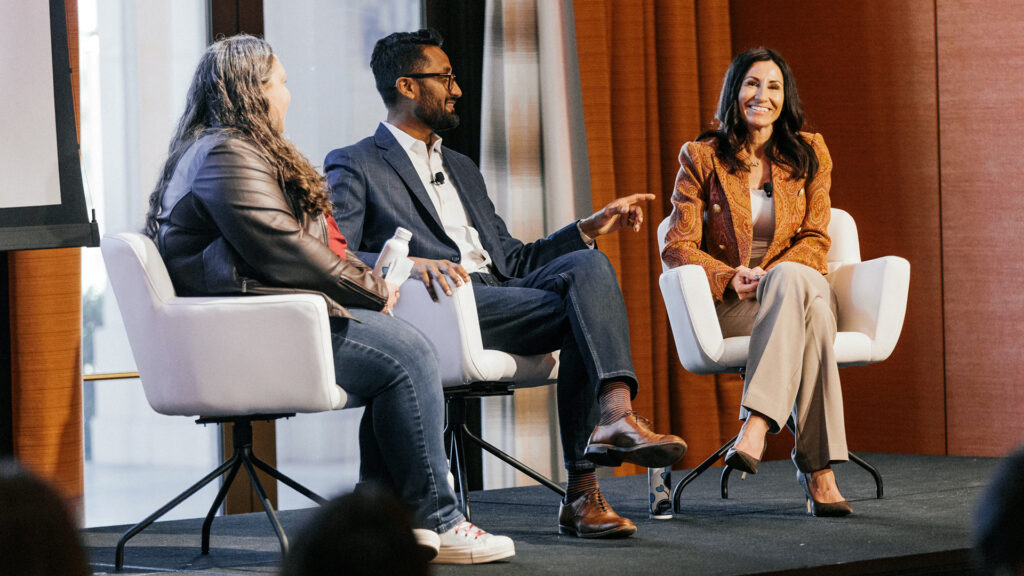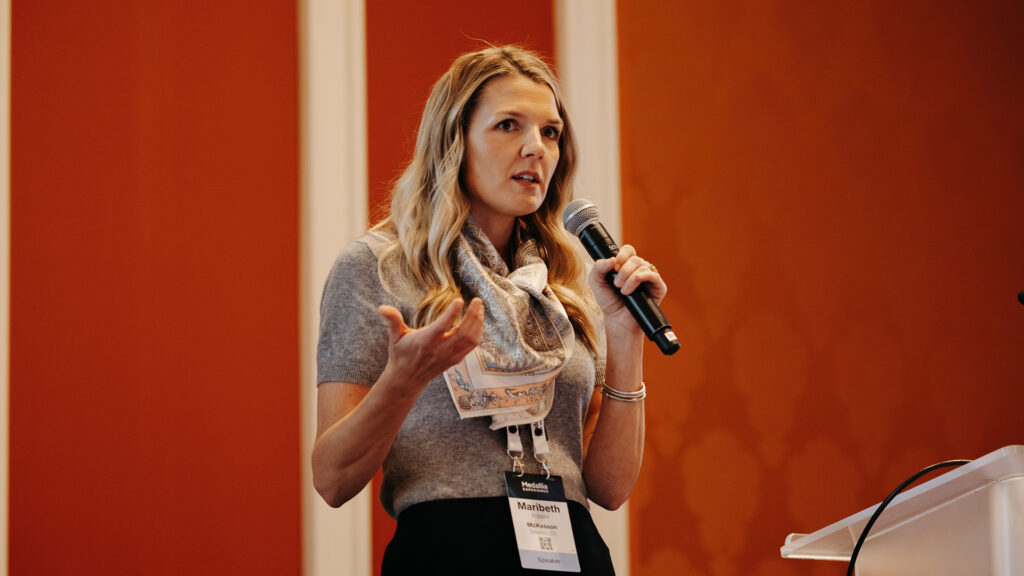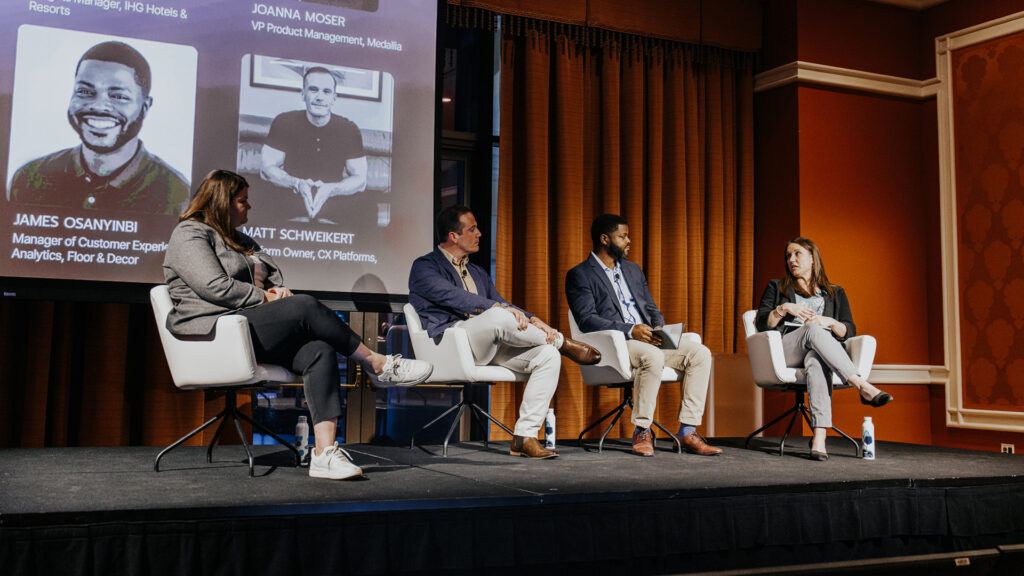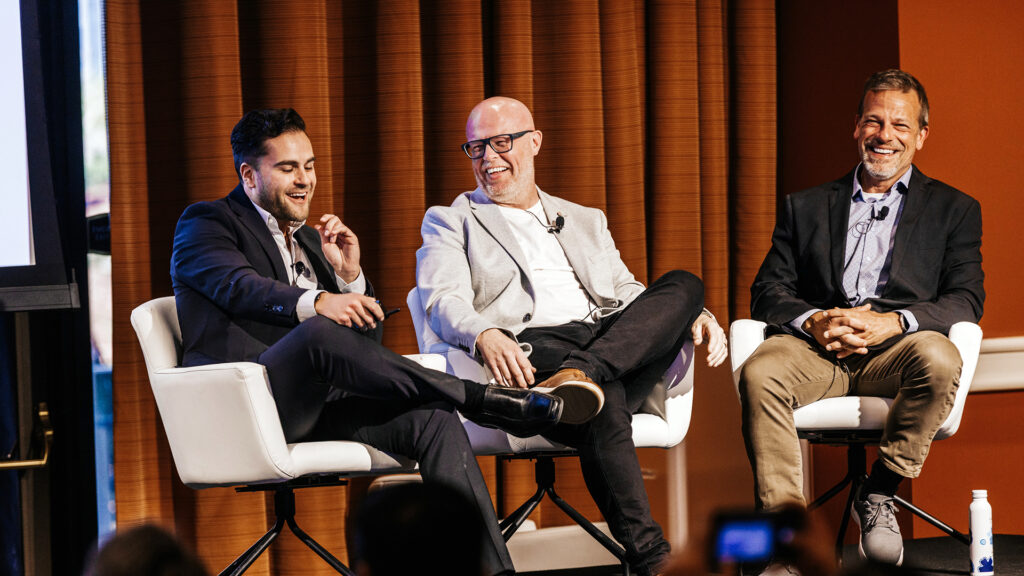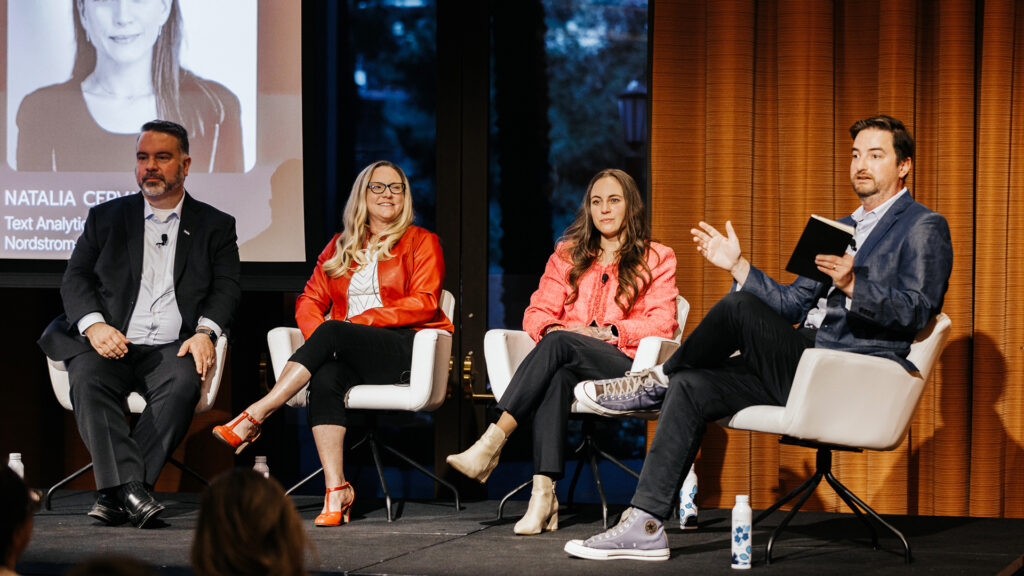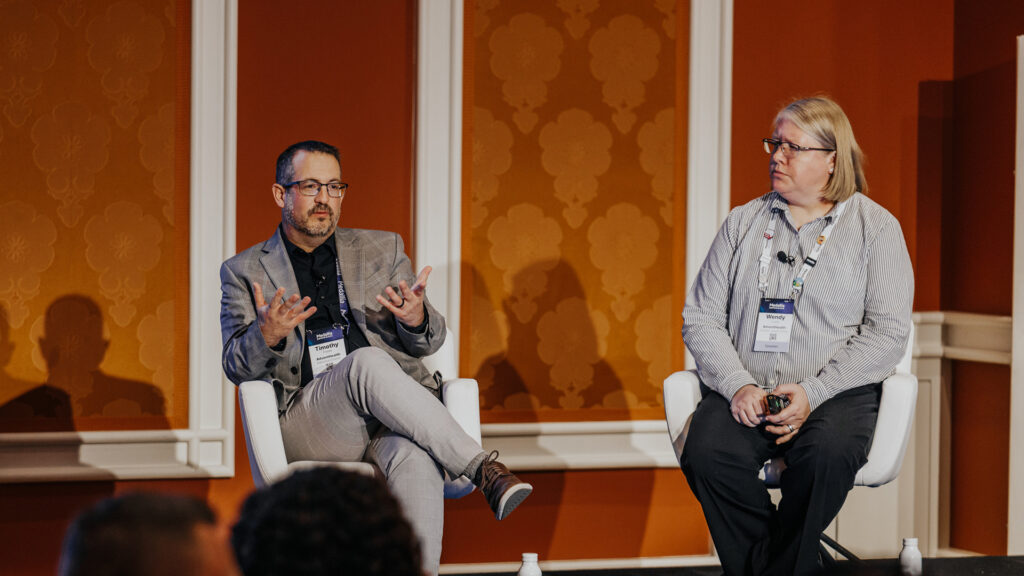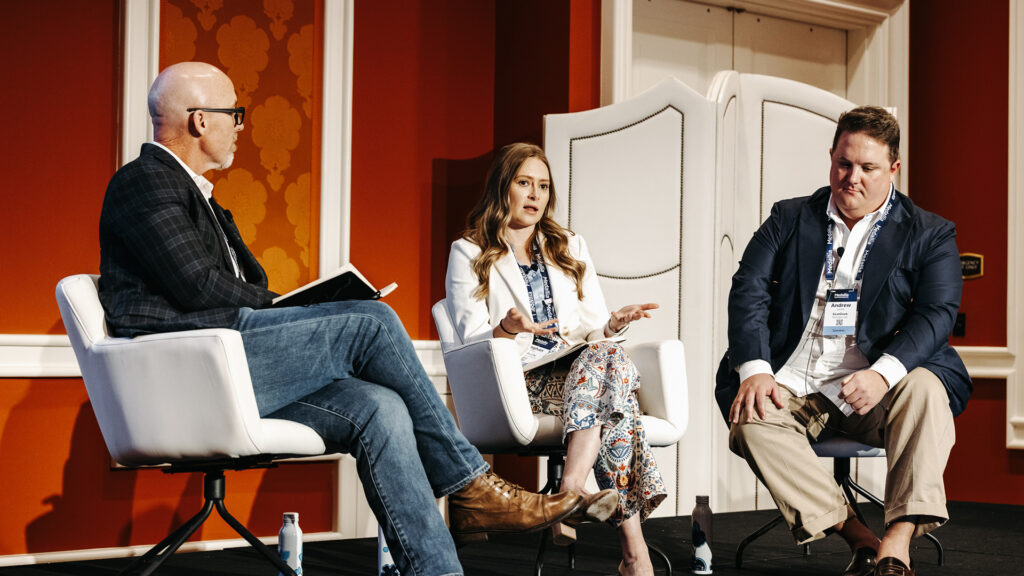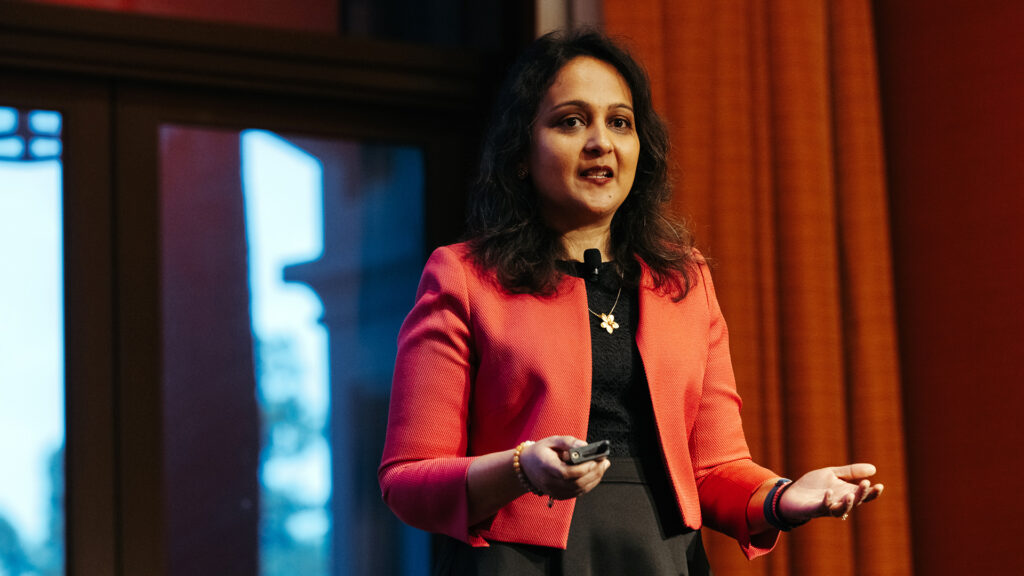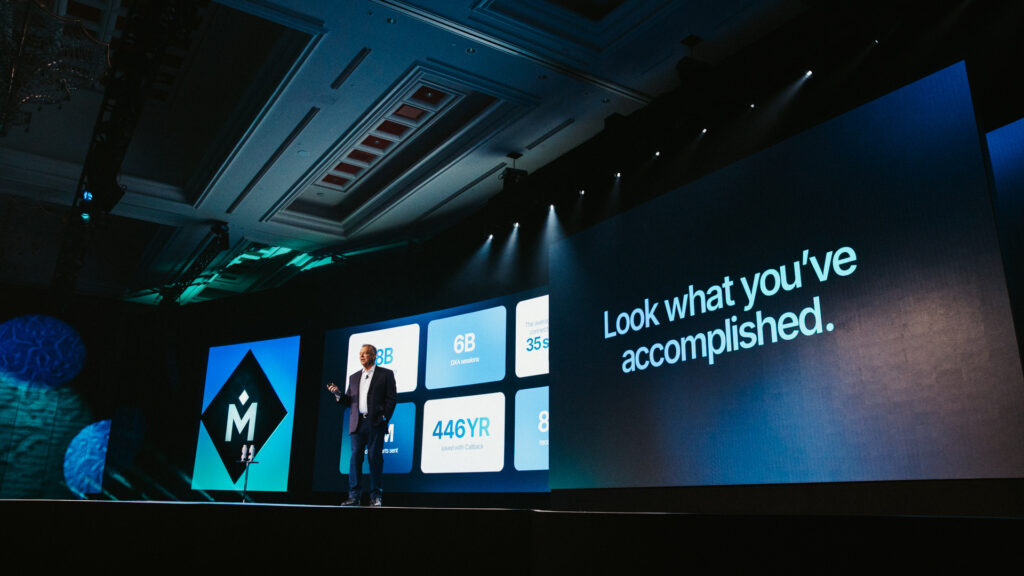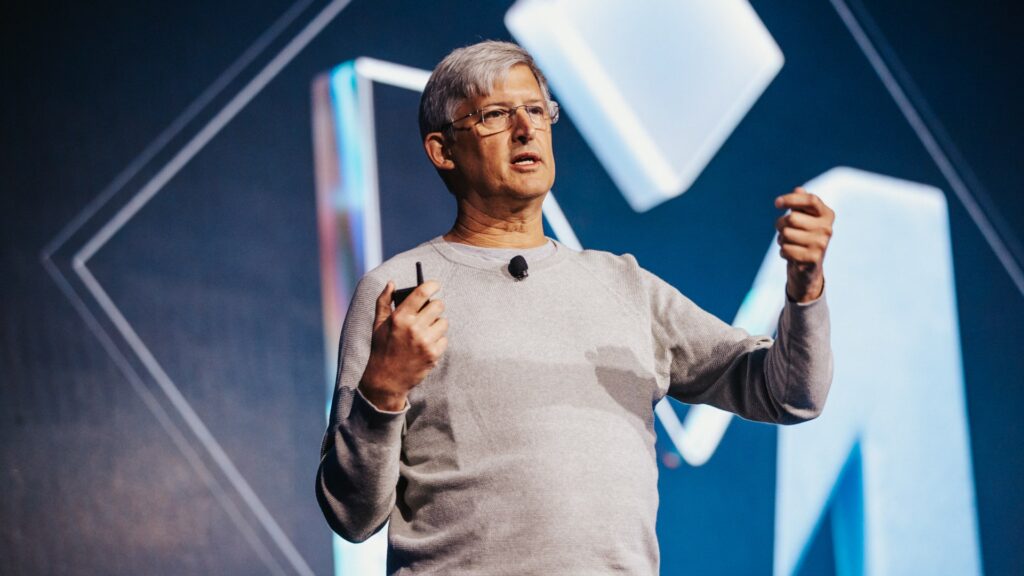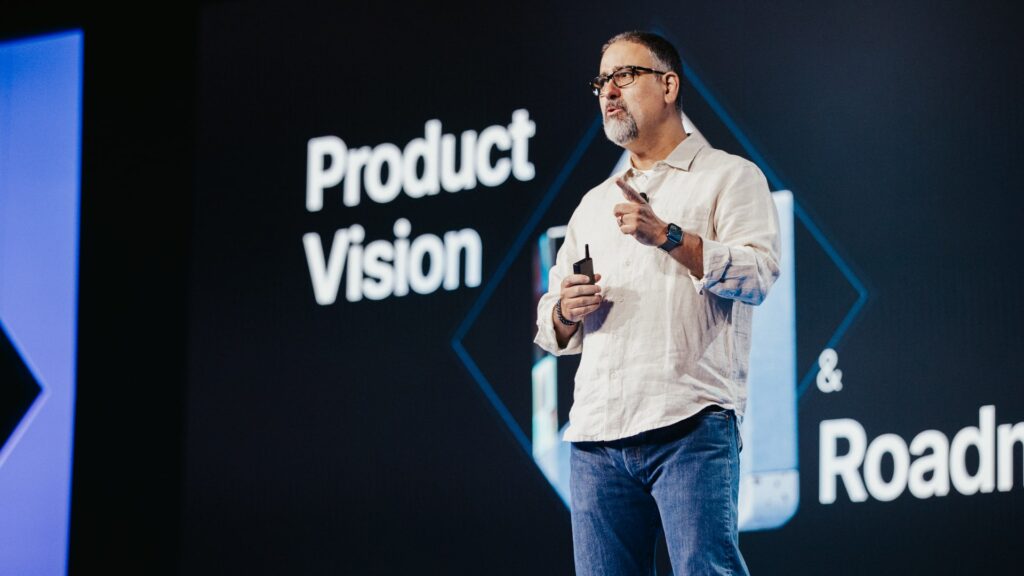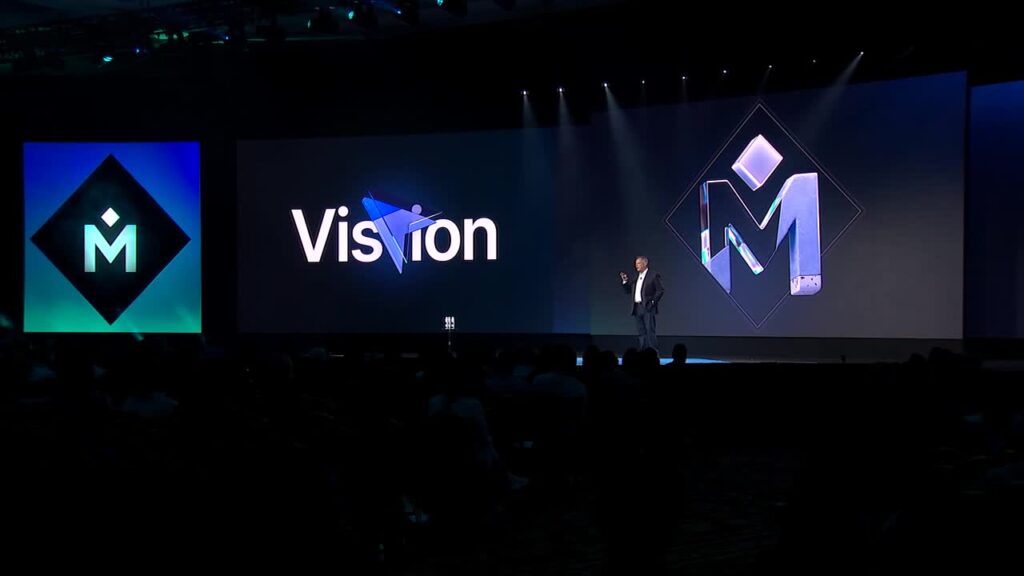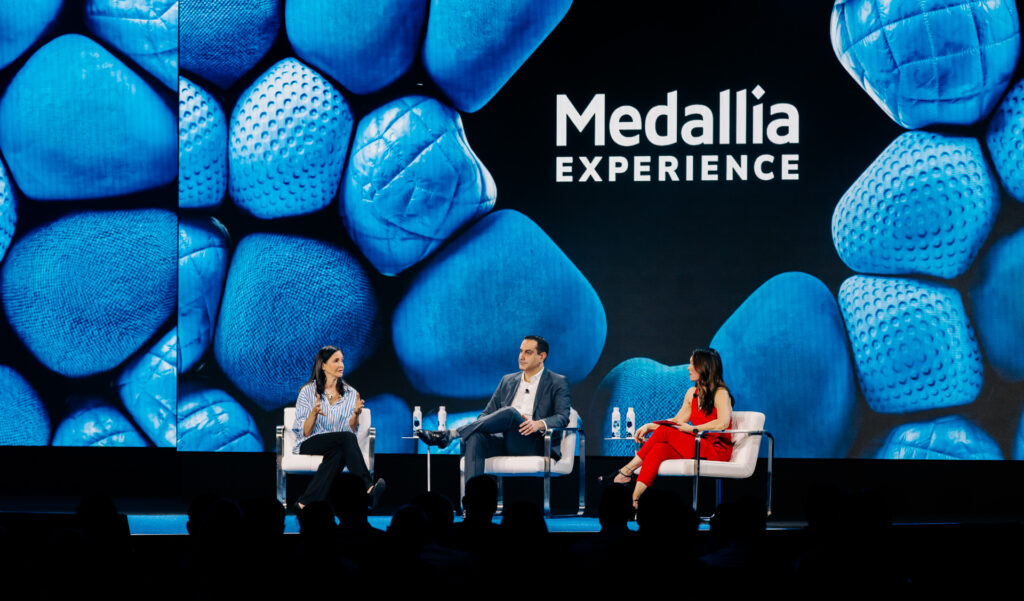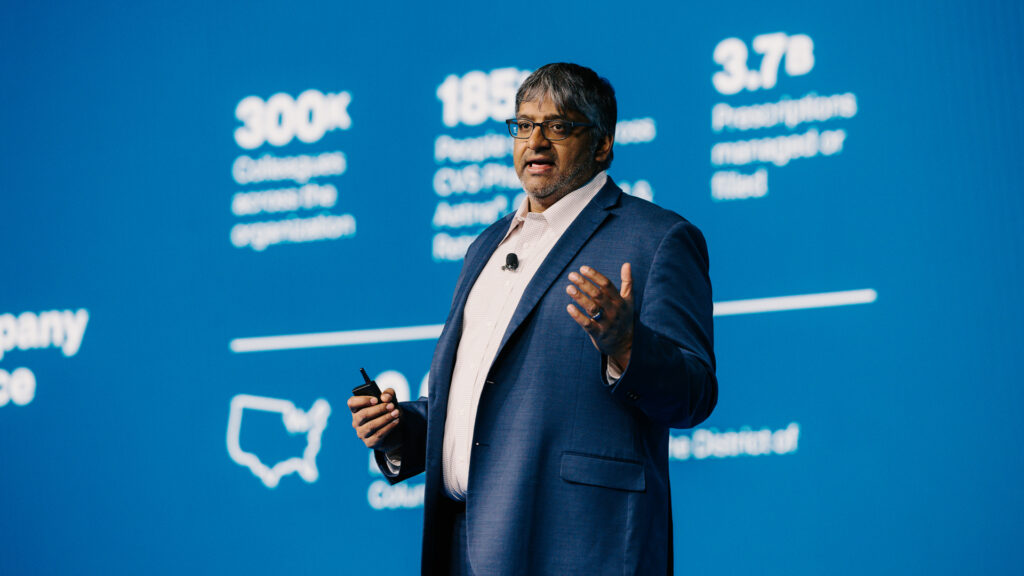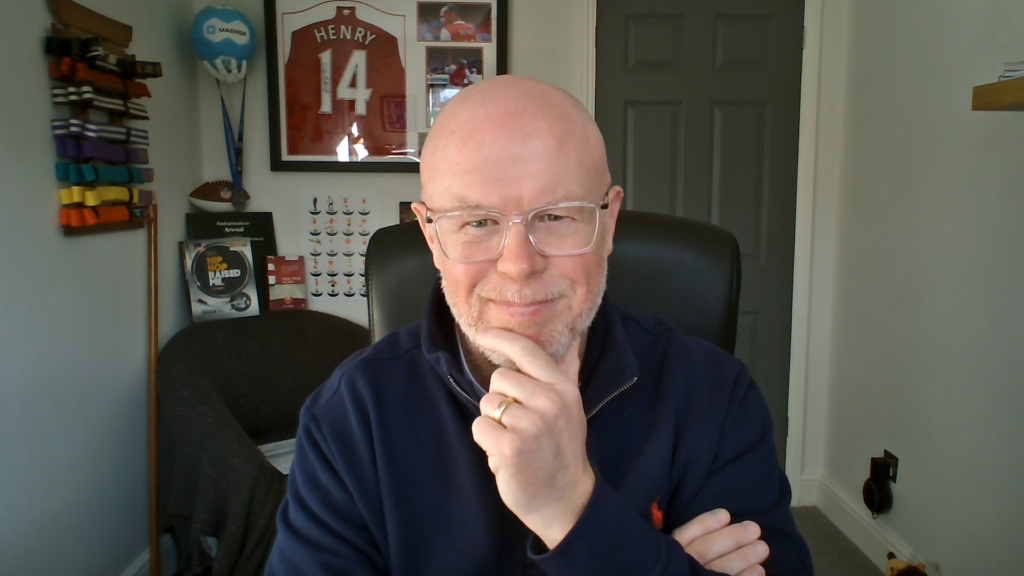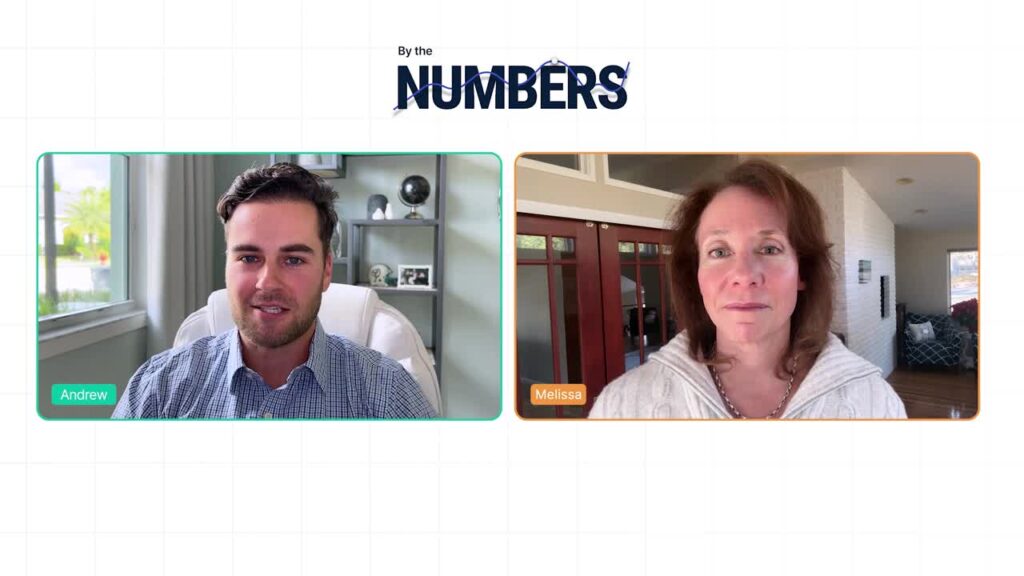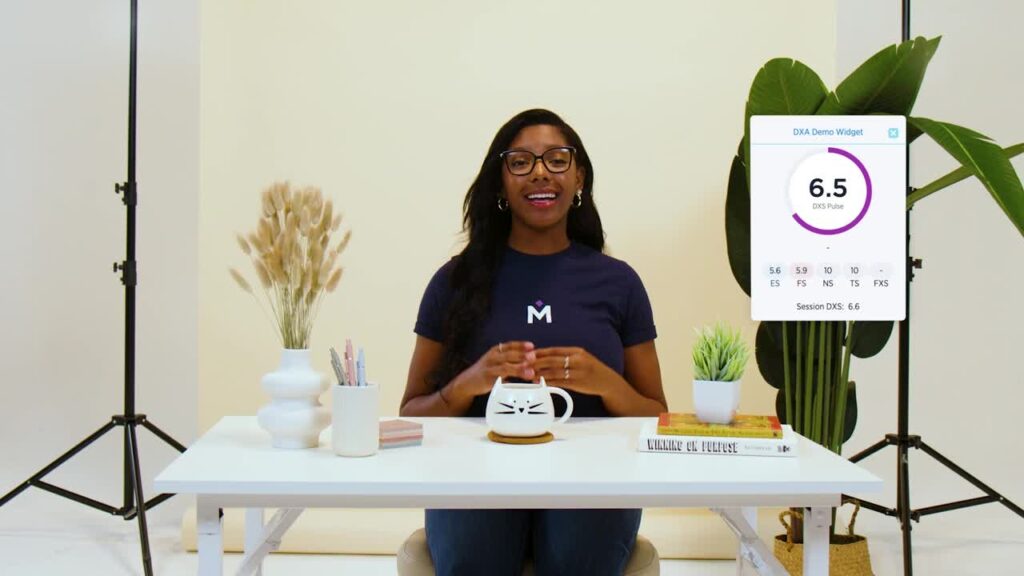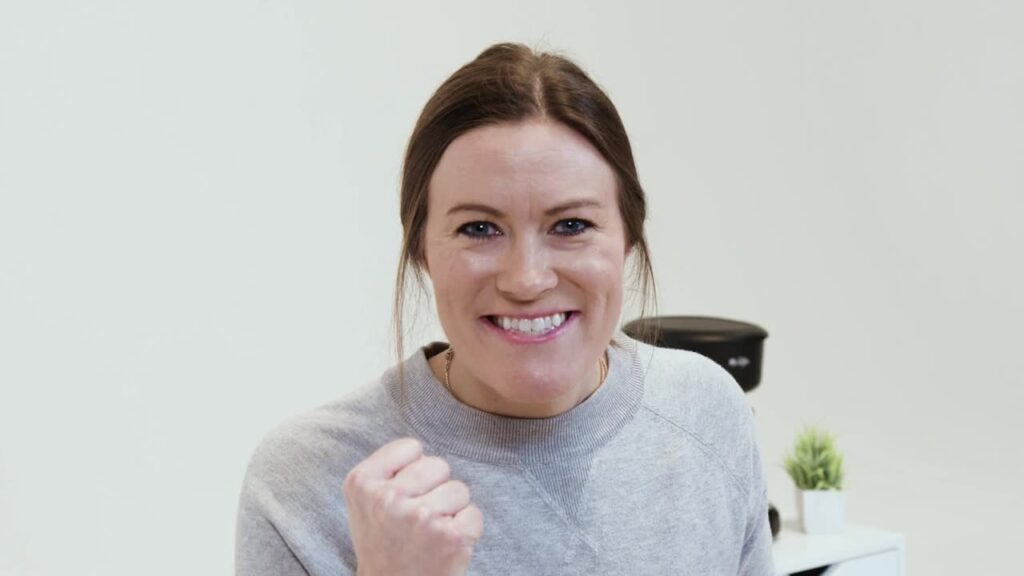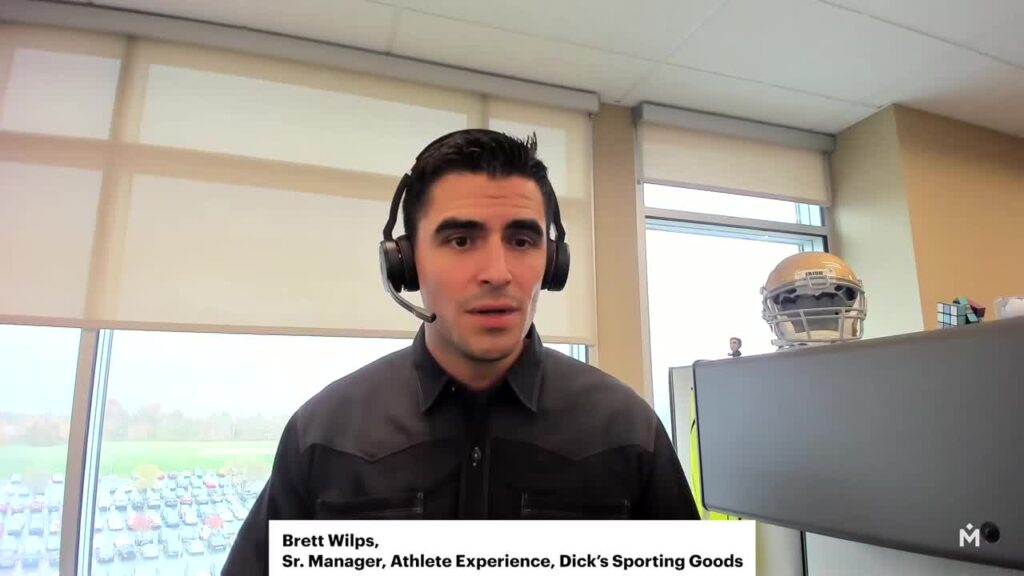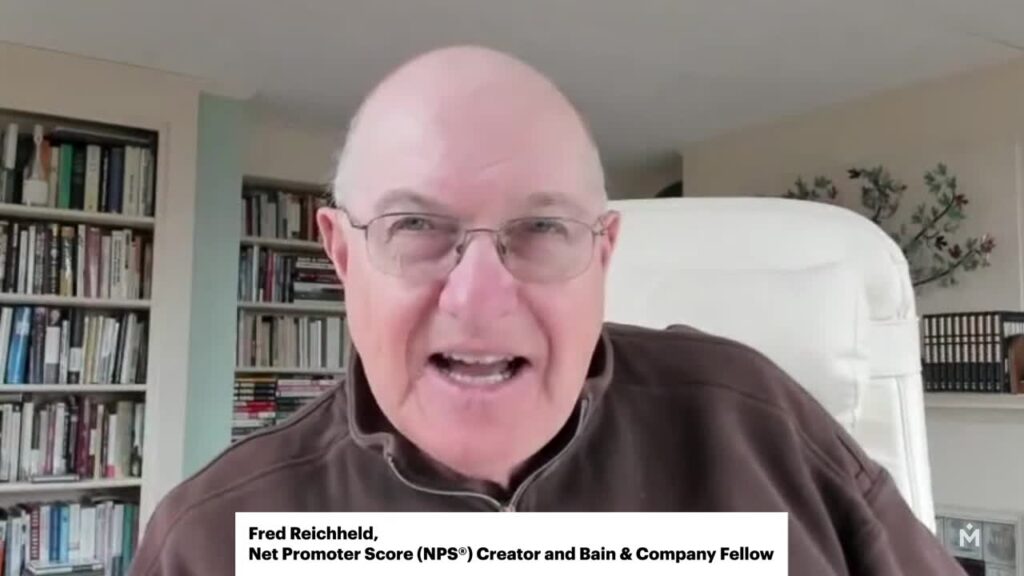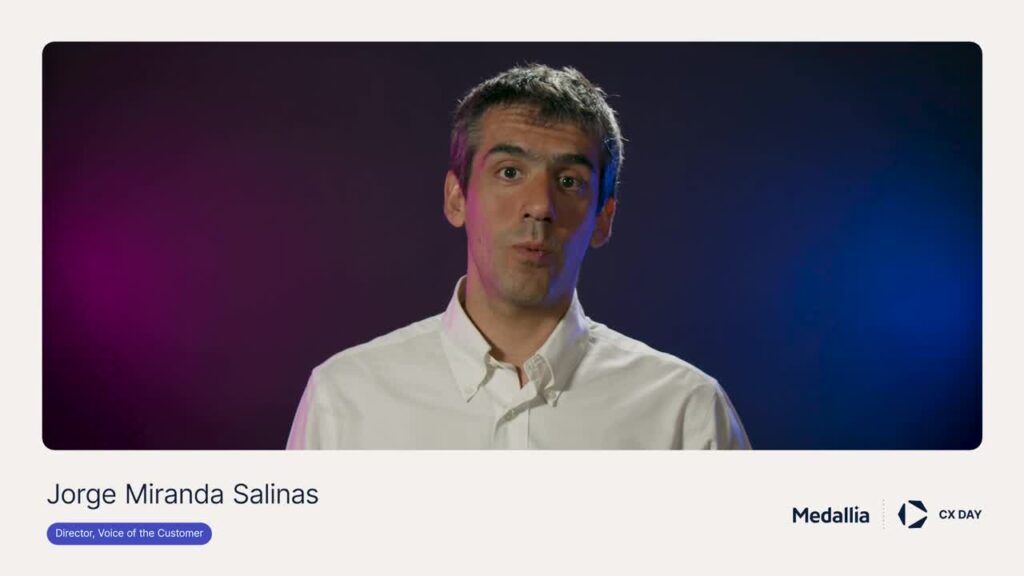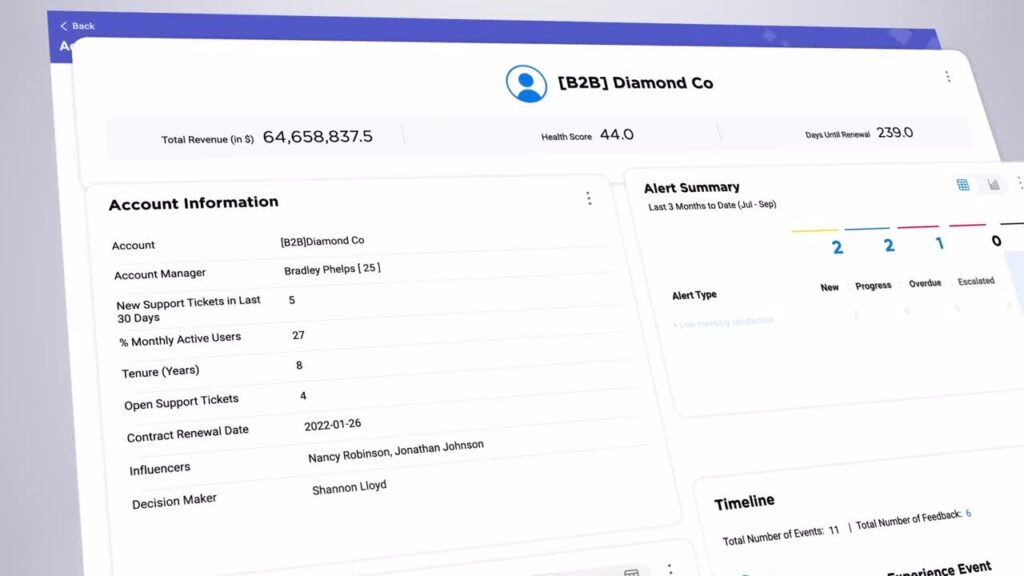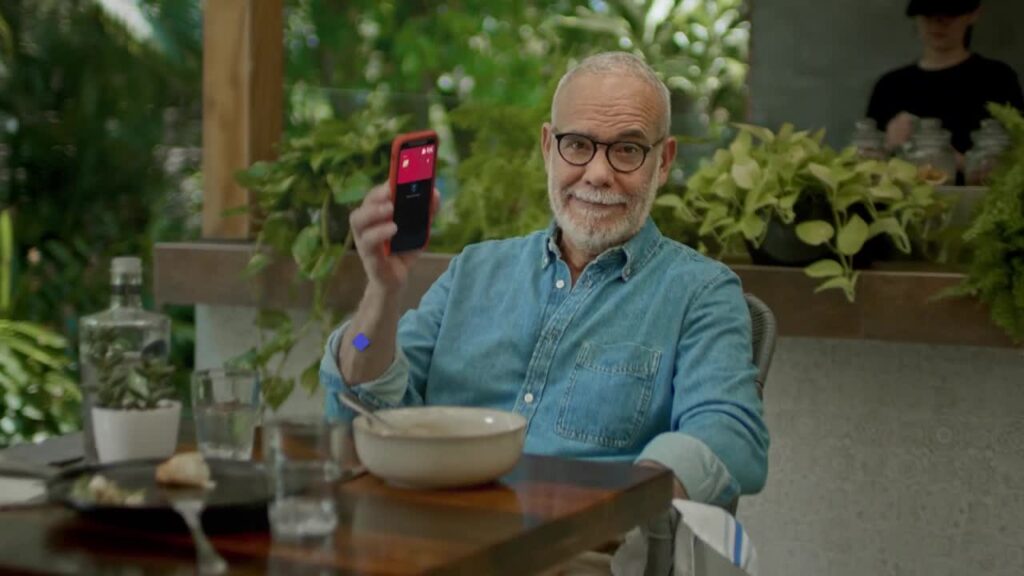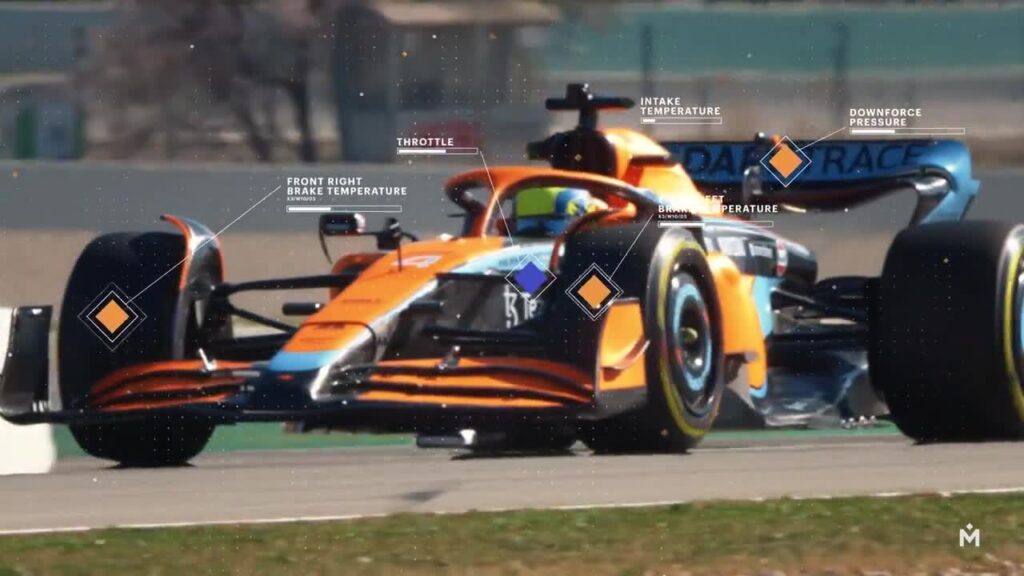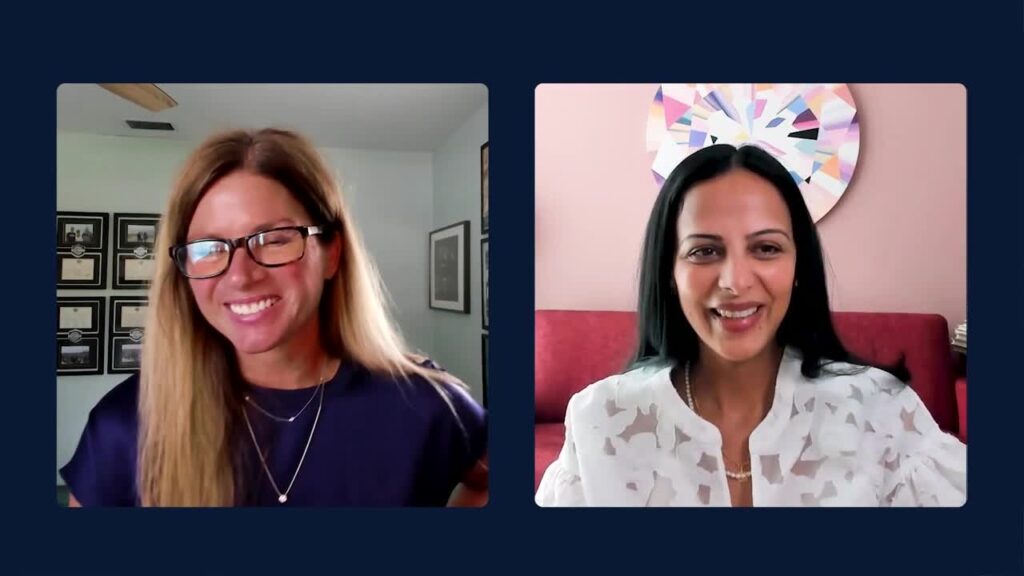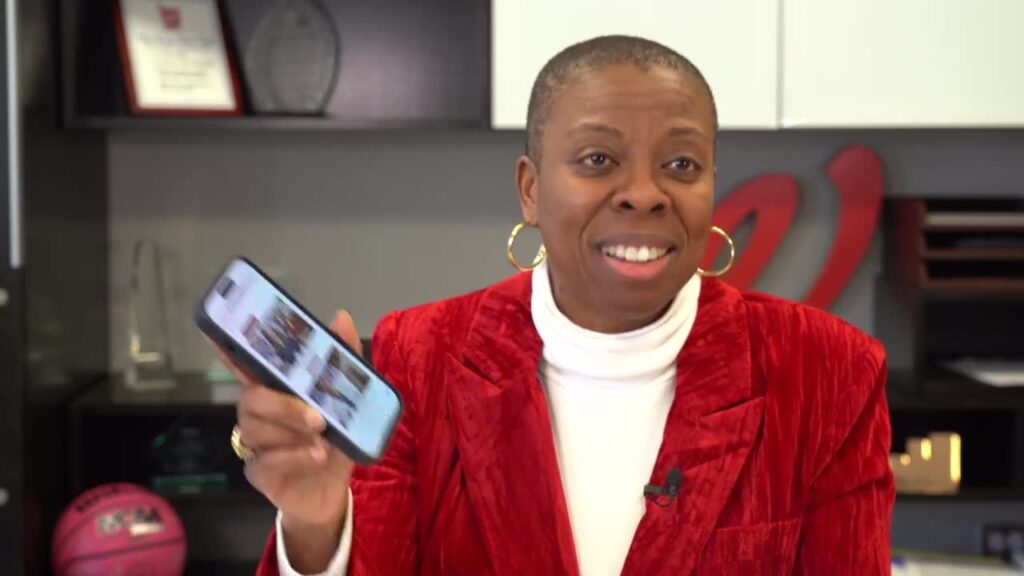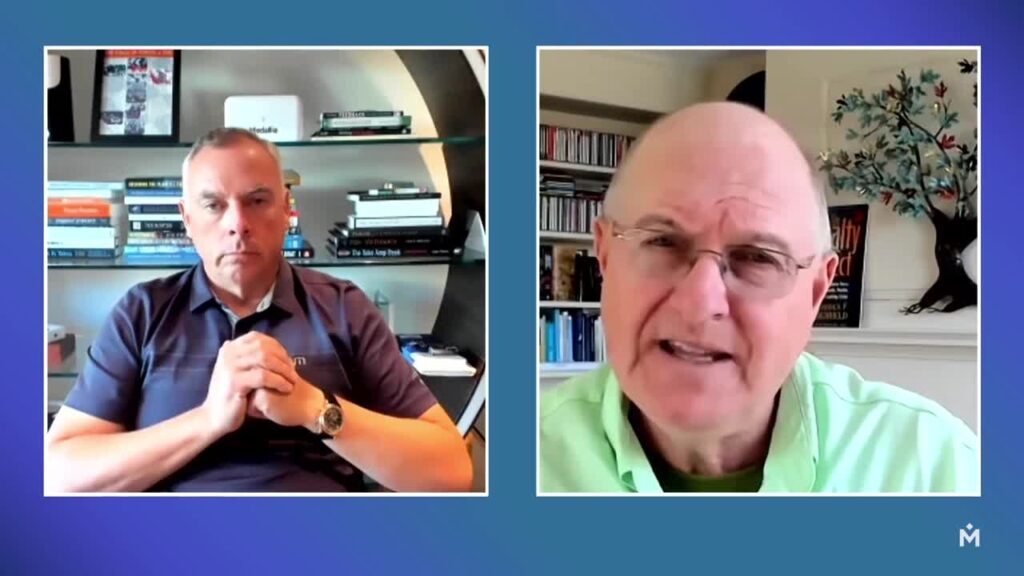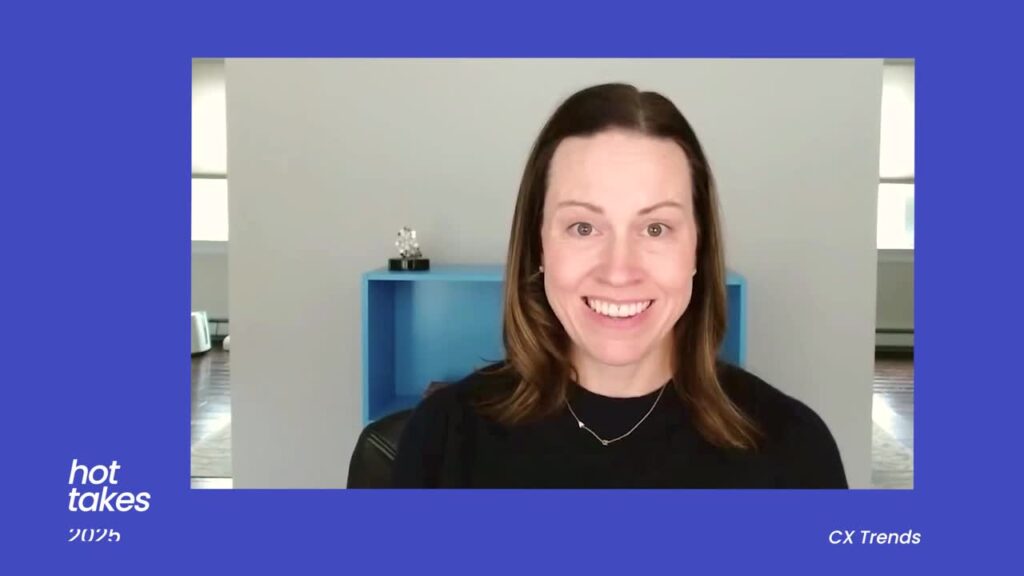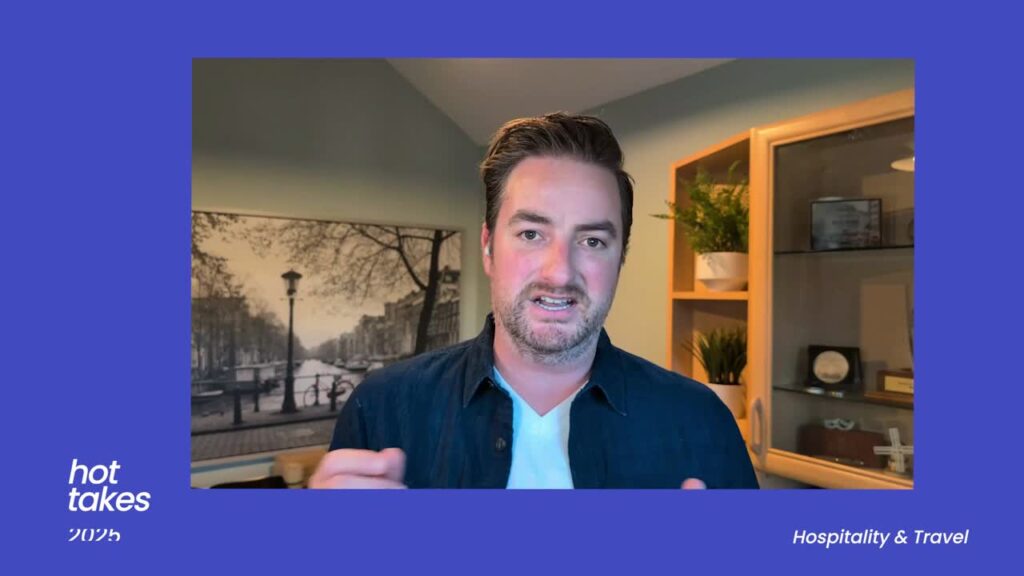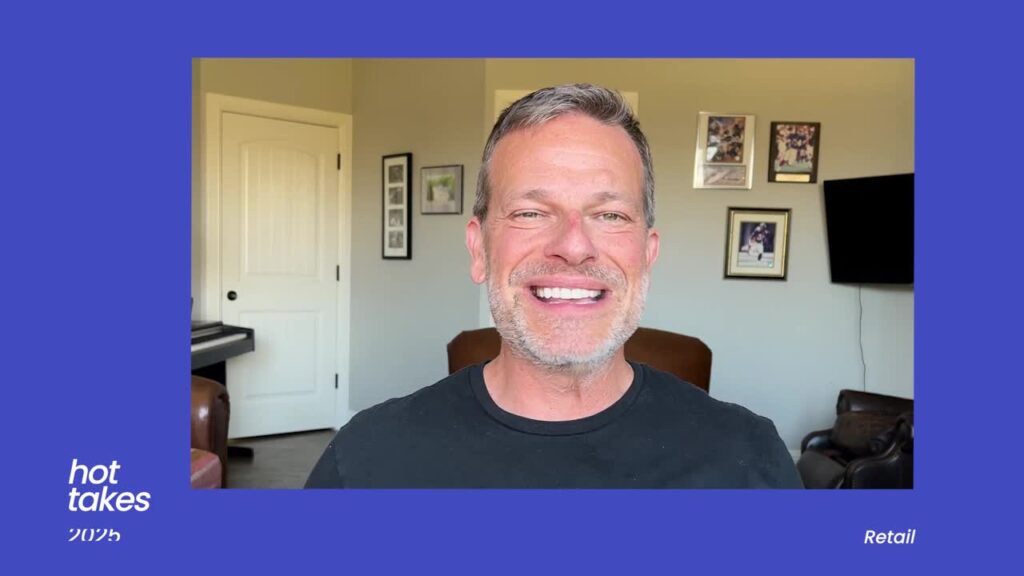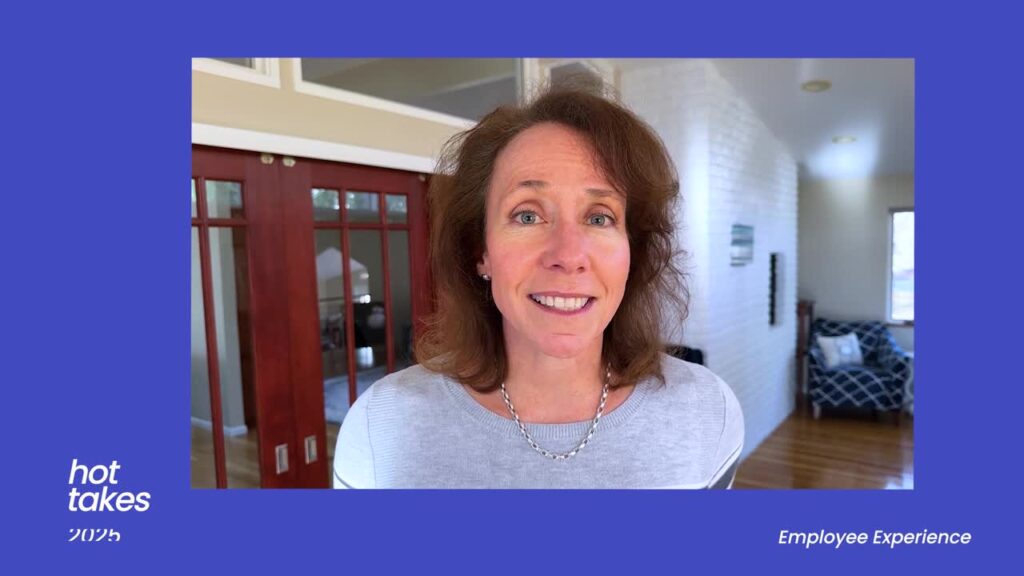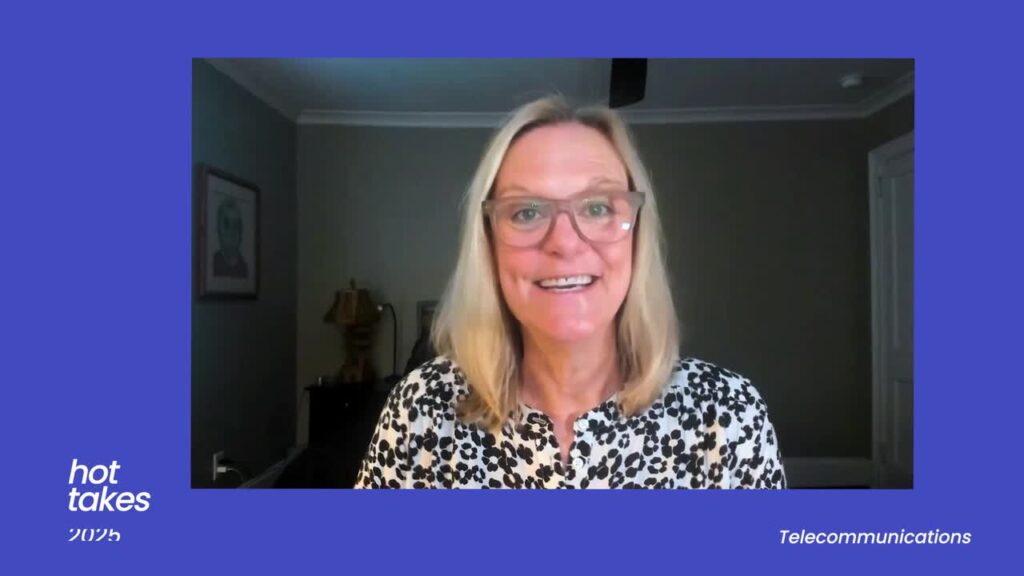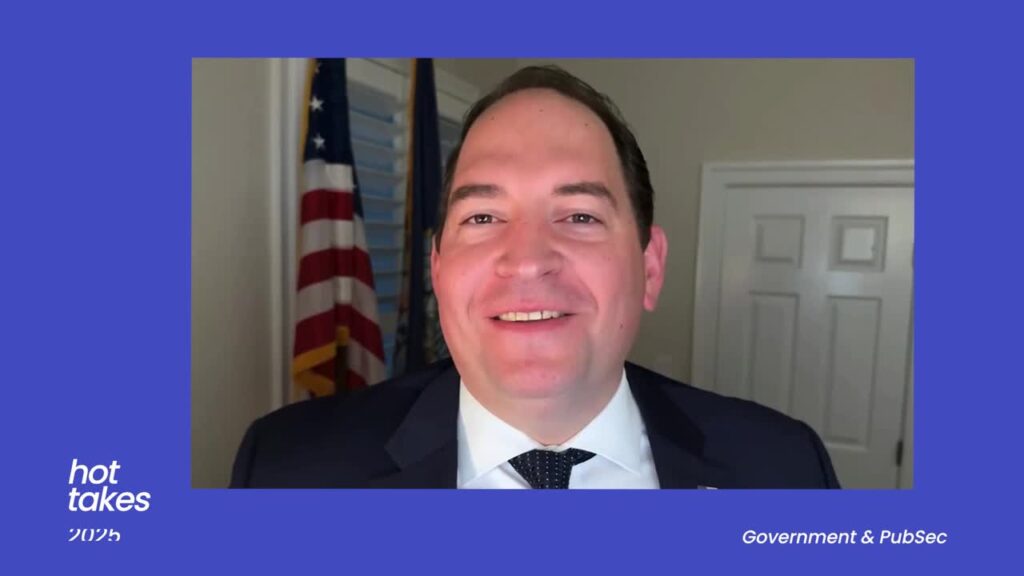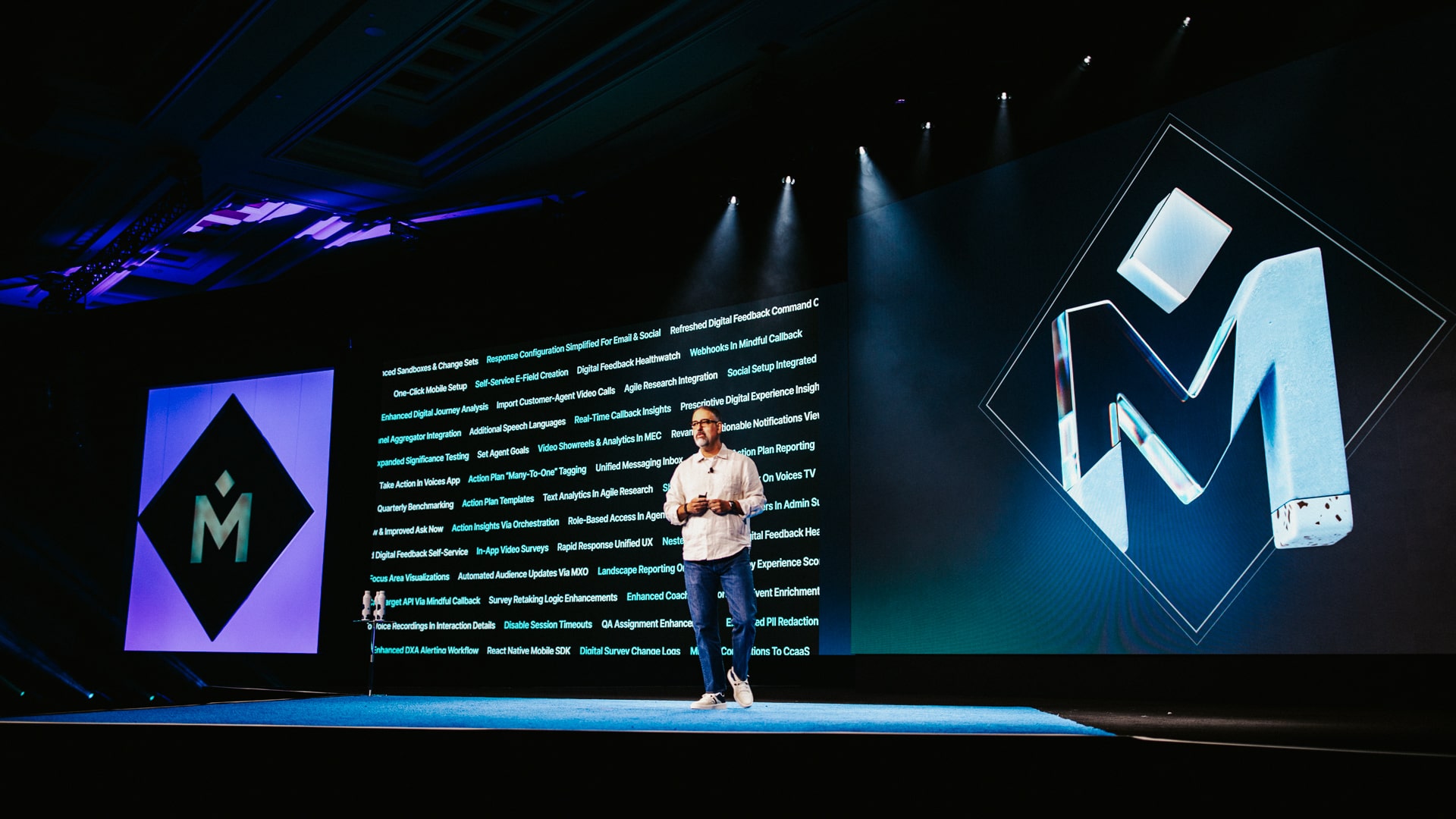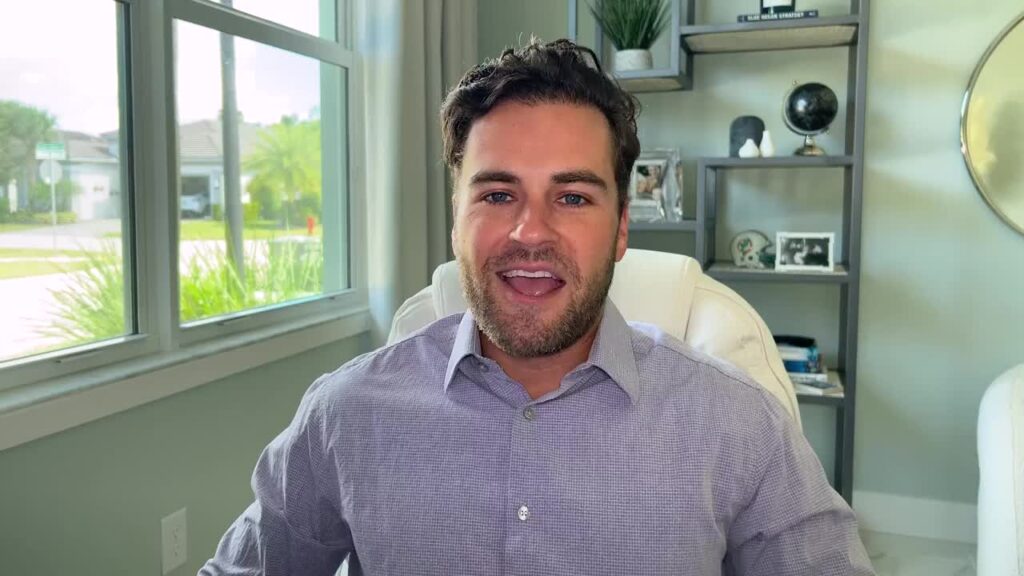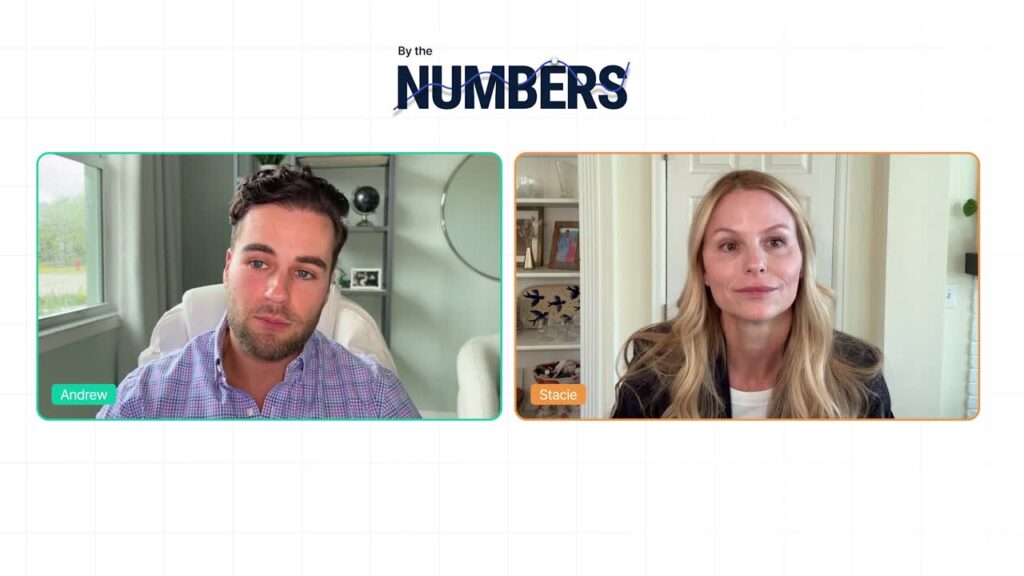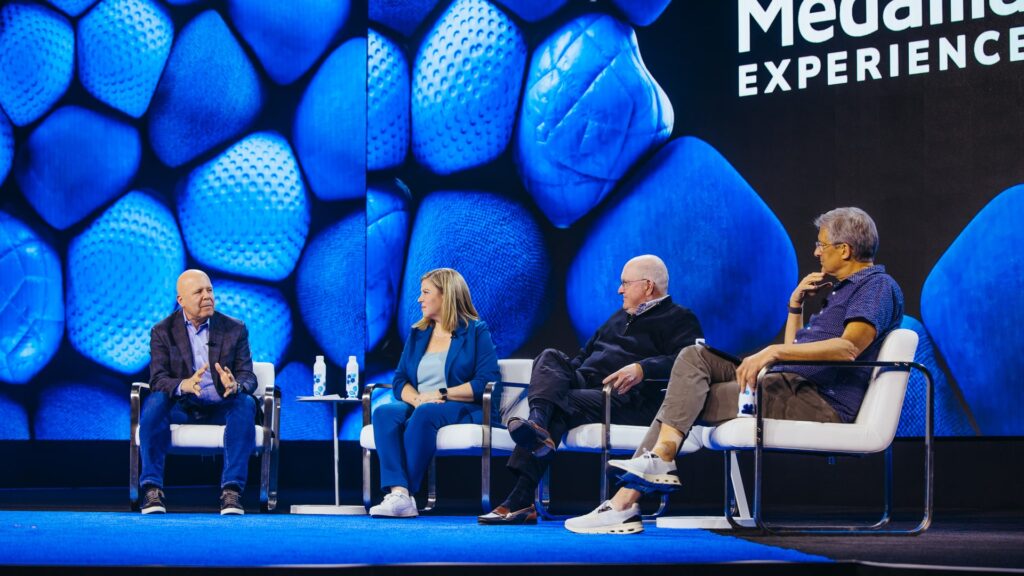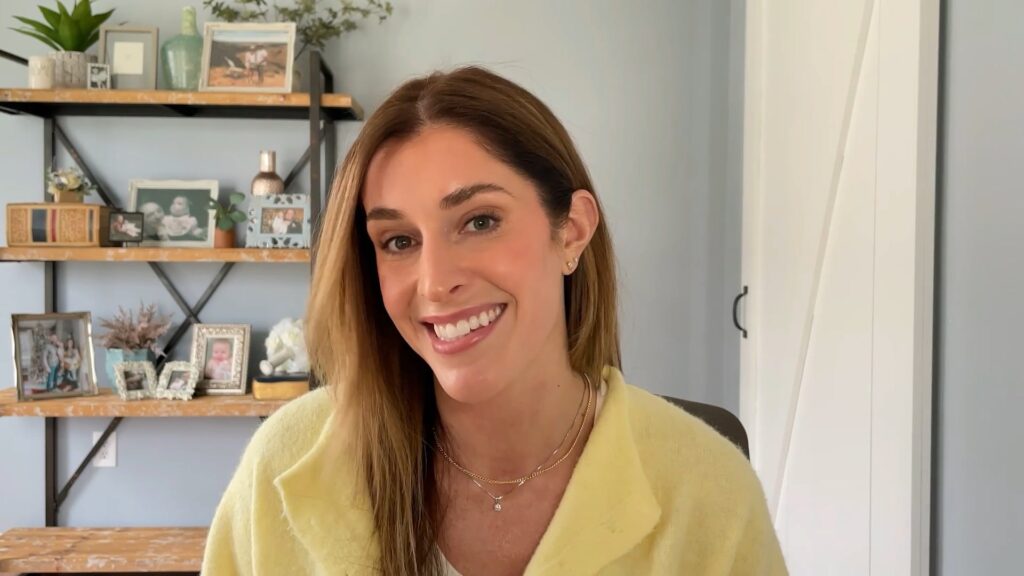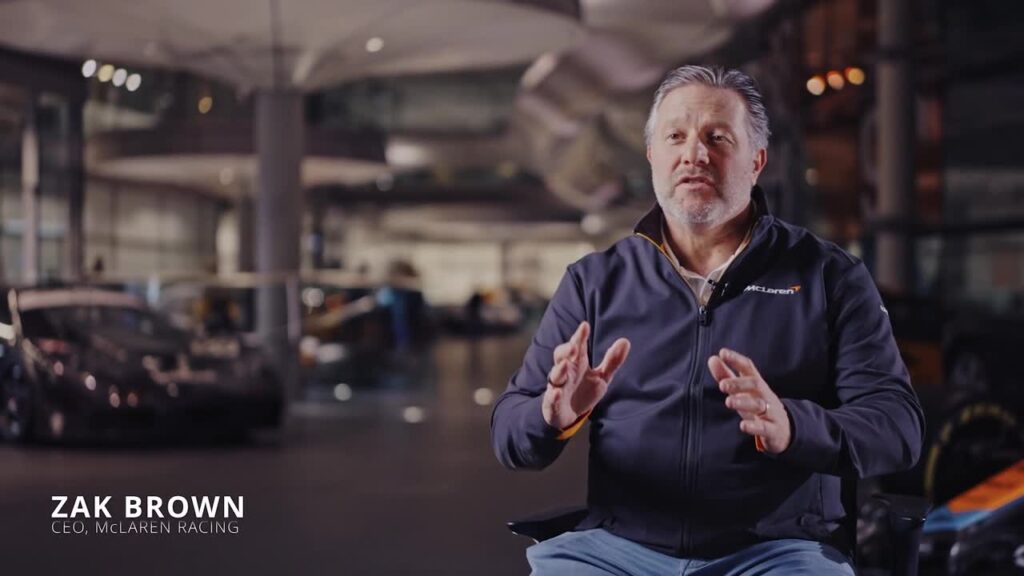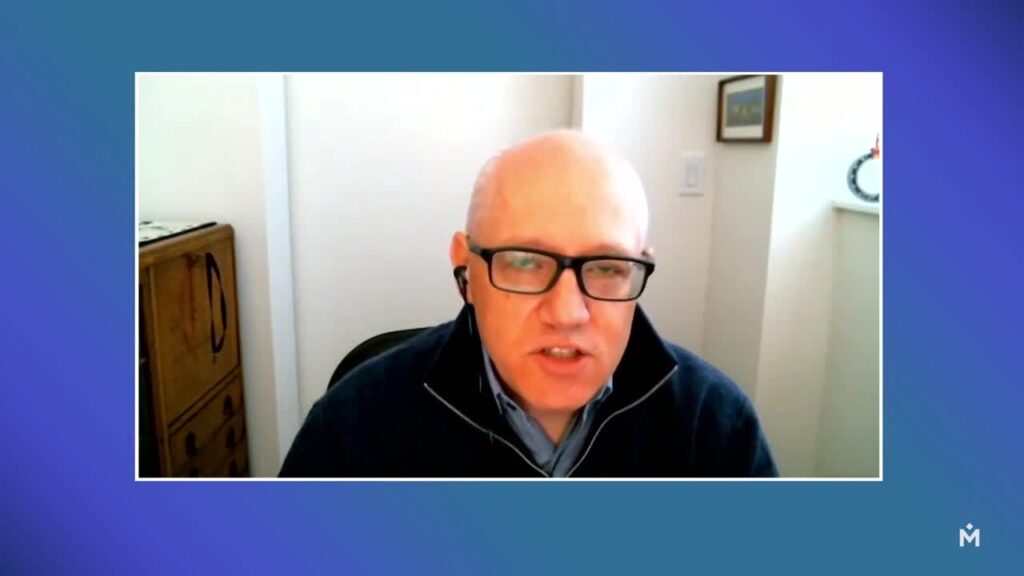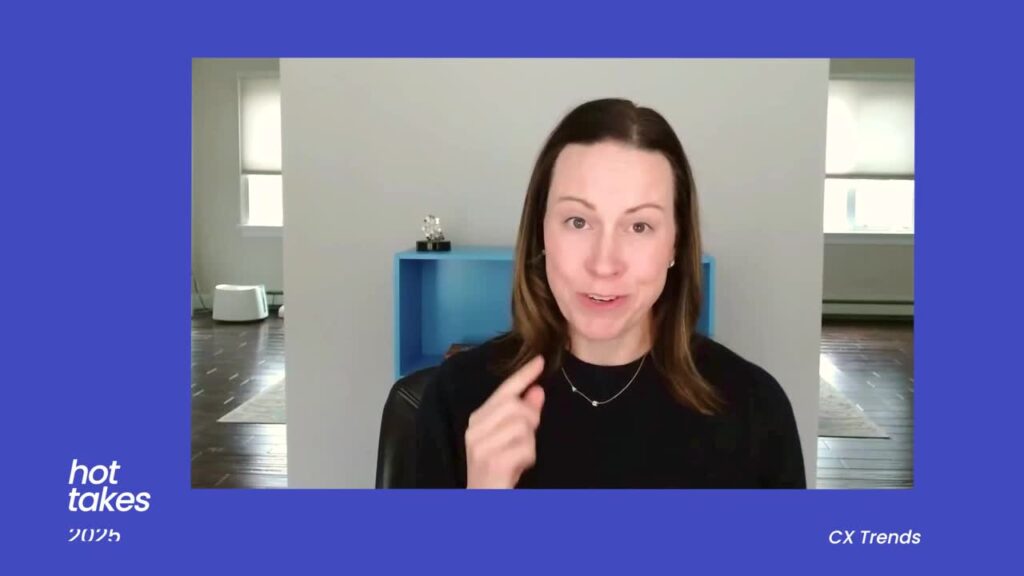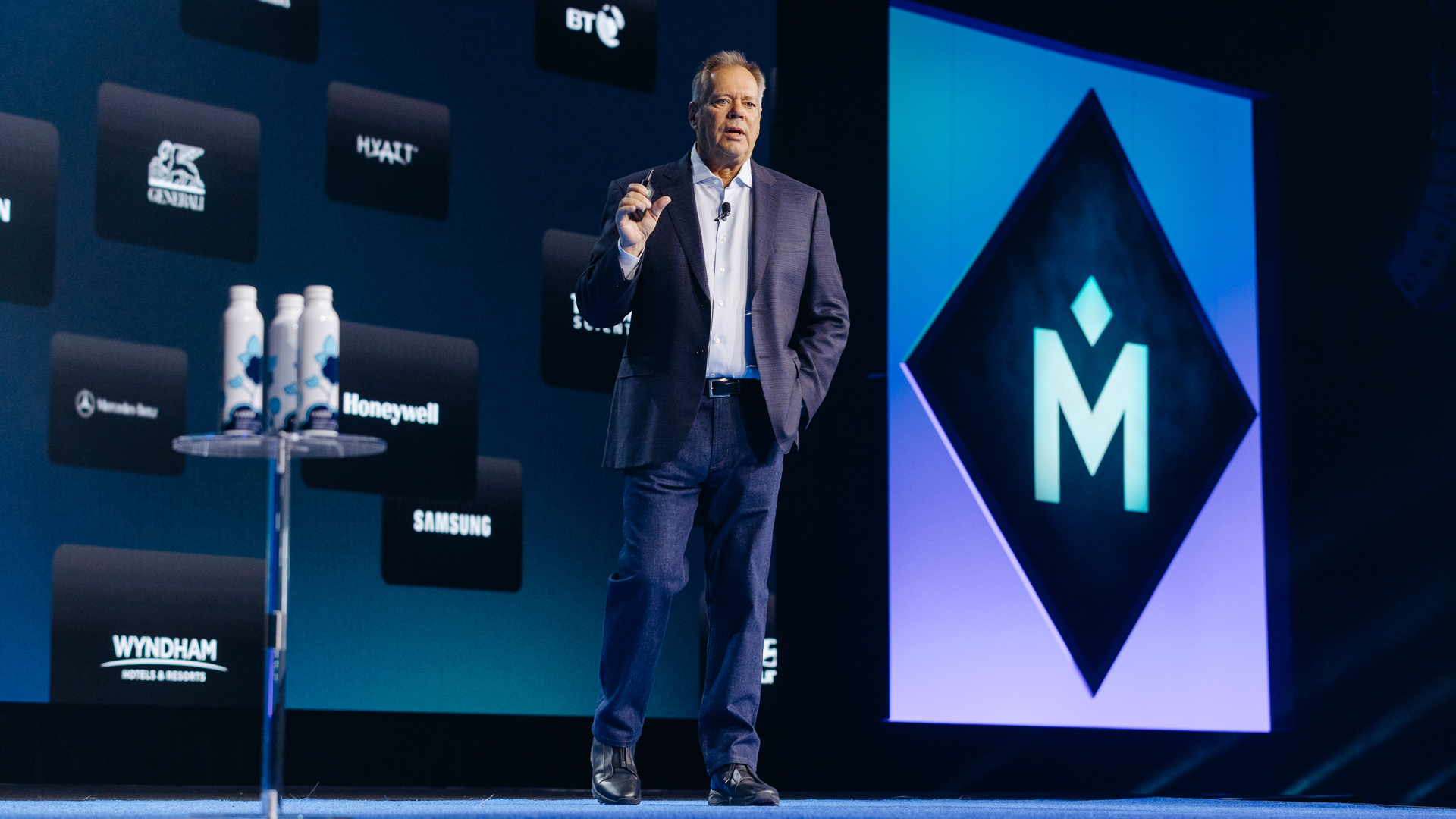Mark Bischof: [00:00:00] [00:01:00] Please welcome Mark Bischof.
Good morning. How’s everybody doing? Woo. So good to be here. Just taking this all in. What a room. Hey, welcome to Las Vegas and welcome to Experience 25. I’m Mark Bischof, newly minted. I guess I own it now. It’s been three months CEO of Medallia. And happy to be here. Want to thank everybody for taking all the time and effort and cost to come out here and spend time with us.
You guys represent the best of the best in cx. These are the top brands. We love you, we appreciate you, and I always look forward to these things. They’re just energizing. And we’ve got a action packed agenda for you. We’ve been spending a lot of time burning the midnight all [00:02:00] figuring out vision, collateral here, how we’re going to market, what’s what company are we building, and we’ll take you through all that.
So again, thanks. When we came here we brought about 15 executives and we made a lot of changes in a short amount of time here at Medallia. And it’s been it’s been challenging. It’s been fun. We I’ve been in this industry, in the CX industry for about. 10 years. I’ve been in the enterprise industrial strength dealing with all of you for about 40 years.
So I’m the old guy. I don’t know when that happened, but I’m the old guy and but I get I’ll work all you. So I’m really excited to be here. So when we look at transforming, like we’re at a sort of an intersection between, customer experience, artificial intelligence. And so when I started considering coming at the helm here, I started looking at it and, talking to Sid and Fabrice and a bunch of others and our investors and, when [00:03:00] I look at the customer experience space, has been doing AI in some way, shape, or form, probably for 10, 12 years.
So it’s nothing new. The tools have changed, the underlying engines have changed, but fundamentally we’ve been doing this for a long time now. Most of this has been in surveys. In a previous life, we were all about omnichannel, conversational analytics, and using AI for that purpose. And so that’s where we’re gonna go.
But when I look at Medallia, I’ve always admired Medallia. When we competed against Medallia, it was tough. You knew you were in for it. Deep expertise, industrial strength, big scale tons of experts and so happy to be here. And it’s I’ve been really thrilled just meeting the teams and going through our process and our customers and just regular, business as usual.
But when we look to transform an industry, you want to start with a company like Medallia, and I’ll tell you why. So big industrial strength [00:04:00] customers, like every brand, every industry, top of the list big data. So in order to do artificial intelligence properly. It’s a lot of it’s text-based.
And so we need lots and lots of data to train our models and just to understand what our customers are saying they speak all the time, different channels, websites, apps, locations, stores, hospitals, and contact centers. Are you listening? And so the other thing that really gets me excited here is that we deal with the big challenges.
If you want a small challenge, a small little market research project, go to the other guy. We deal with big industrial strength problems. We move the needle. We help transform businesses here. Super excited to be here. Before I get started, I want to thank our partners. We’re never, life’s all about picking your partners and so we will be spending a lot of time building out an ecosystem here.
I’m a firm believer in this I [00:05:00] got started as a management consultant. I was a partner at Deloitte, so I see Deloitte, my Alma Ma is here. Happy, best and brightest and I guess once in never out. So happy to see those guys here. User testing, five, nine, Ipsos and Kantar. The license list goes on.
But really do appreciate you guys being here, spending time and just, partnering with us to make our customers successful. Our goal here is to create global CX programs. In order to do that, we have the world’s leading platform and we will keep investing in that. We’ve got some of the world’s leading experts and process, and we have a teachable point of view, but we need other people to do this.
So the partners are gonna be key to this. More to come on that, but we can’t do this by ourselves. Okay, so this is what gets me fired up, and thank you all for being here again the the world class CX programs on this, on these screens. Just amazing. So Bank of America. And we spent some time [00:06:00] yesterday with those folks, and that’s probably the largest, most successful CX program that I know of.
And I’ve been doing this quite a while. We got Walmart, we got Apple at and t, meta visa list goes on and on. But you can see just the sampling of our top customers here. They are literally a who’s who, they move the needle. This is how the world runs with these brands. And we’re happy and privileged and honored to be, the platform of choice for you guys.
And we take that very seriously. So I’ve spent over the last 90 days probably 30 to 40 customer visits talking with a lot of you. And here’s what I’ve heard. I got an earful just to be totally frank, just saying I remember I just, I’m new so we can fix it. I can’t do anything about the past, but I can fix the future.
So what I heard is slow to innovate. So we’ve got we’re announcing seven new AI innovations and solutions that are available today. There’s a press release that [00:07:00] went out. We’ll take you through that. Sid and Fabrice will take you through it. But we’re super proud of this and a lot of folks, I spent, two years on the sidelines looking at this whole thing and just shaking my head like, we’ve been throwing Gen AI on every survey out there.
And again, it just gets you so far what we spent our time and we were late in delivering some of this. I don’t know, I guess we got ahead of our skis and actually gave you dates. In the future. We’re not giving you dates. We’ll let you know when the things are available so you can plan avail accordingly.
But like at the end of the day I. These AI innovations are text-based, and so you need structured and unstructured data, but the unstructured data is super important. And so I’m happy to report today that we’re the first and only CX provider that has these AI solutions for both structured and unstructured data.
Calls, chats, all the things that matter. So a hundred percent of the data that you bring in, we can process on a single platform across all [00:08:00] channels and data. I’ve heard we’re not seeing the ROI and so a lot of the, a lot of you have started out with CX programs for CX buyers with surveys, and it’s awesome.
It’s what got us here. We built a very large business and the industry started this way, and that was the state of the art. But guess what? The art changed. The world changed. And so we had to change with that. And like at the end of the day here, we’re gonna basically. Try to start pivoting, building off of those survey programs into the future.
More to come on that. Lacking self-service. And so I, I’ve heard that, I’ve heard that, for the last 10 years. Yeah, Medallia’s great. They’ve got experts, but it takes an army to go, change a survey and so happy to report that. As of today, or actually we’ve been delivering this, no one’s actually told you about this.
We’ve got agile research, so if you want to do and throw out re research [00:09:00] surveys, it’s now included in the platform. All you need to do is turn it on and go crazy. It’s already included everyone. It’s super easy and it’s all self-service. Lack of executive engagement. That’s the one that really bothers me.
Because like at the end of the day, this is a re this experience. Customer experience is really about, superior relationship building. At the end of the day, it’s Hey, we need to have a relationship with you. Things are gonna go bump in the night, but when we have a really solid relationship, think about it, and it all walks of life, you got a great relationship.
Life’s just easy, right? You just build off of each other and you start drafting off each other. And so these executive engagements I personally and what you’ll know from our team we actually know a lot of you from our previous life. And we need to get back in front of you, spend time with your teams, get closer to the flame, understand where you are, do some assessments.
So we’re coming into this a [00:10:00] little, 90 days in, and again, we’ve probably seen 60, 70 customers. And it’s not just about us, it’s about our entire team. But we’re gonna be the vanguard here. And so we’re all over this. And so you have my commitment that we are basically going to put, customer experience back into Medallia as of today.
Okay. There you go. Thank you. Hold me to it. All right, so when we talk about Medallia’s Industrial Strength, enterprise, cx, big scale, what are we actually talking about? So let’s go through it. So 3.2 billion customer interactions process per year. That’s a staggering amount of surveys, calls, chats, rating, and reviews.
Like we’re listening a hundred percent of the time. We processed over a billion calls. This is an area that we’re gonna hit hard with all of you. And so when you ask us, Hey, you guys are the experts, what should we be doing? We’re not getting the [00:11:00] ROII. I’ll tell you what, in the contact centers, the calls, when we, how many have a voice of the customer program?
Back at home, probably all of you, right? Don’t be bashful. Yeah. So the voice of the customer, quite frankly is the calls in the contact center. It’s not a survey. And so understanding and processing, like use the ai, we have the ability to basically take those calls, turn it into text and analyze that all day long.
And so you can do a hundred percent of the calls, figure this stuff out and save just a whack of money. The ROI is staggering in these contact centers and will pay for everything else that you’re doing and will this week and the next week to come will be on going on city tours. We’ll, this is not the last time you’ll see us, trust me.
And so we will be coming to you and yours and showing and putting our money where our mouth is and demonstrating the full power of what we do. So this one was staggering to me. On average we connect [00:12:00] to 35. Systems operational systems systems of insight, and that’s on average.
There’s plenty of customers where we’re doing 150, 200 integrations. That’s sticky, that’s hard to do. The other guys can’t do this at scale. 60 million closed loop alerts this year. One of the things that really got me excited about Medallia, is their ability to close the loop. It’s always been, so when you have a customer issue, you’re a frontline manager, I got a problem.
I call my customer and I go solve his problem. I get at least calm ’em down, offer ’em something all the rest of it. Collecting information, analyzing that information. It’s like reading the newspaper if you don’t take any action. And so most of the CX providers out there, they’re not closing the loop, both the inner and the outer loop.
So with your frontline customers as well as the rest of the lines of business. And so that’s something that like, we do that better than [00:13:00] anybody. And so now with automation and AI automation coming in, we’ve got, this org hierarchy that we have where we can understand you’ve got 350,000 employees, we understand the hierarchies and all that.
People move, people, change jobs and we have the right insights to the right people and now to the right systems in automation. And so more to come on that. And then this one was a real shocker. When we talked, I got an earful from all, Hey, we’re not innovating fast enough. We’ve got 101.2 million daily active AI users using, banging away on our platform every day.
Like I said, we’ve been doing this for a long time and so like we can do it at scale so that a lot of people can put Gen AI on top of text file and get some insights. That’s easy. At the end of the day, it’s about doing this at scale with Security. Bank of America’s got 5 billion attacks coming in over, over the over the internet every [00:14:00] day.
You can’t just mess around with this. And casually, some of the startups, they’ve got 10 customers. This is easy. If you’re greenfield, if you have an embedded, integrated base, this becomes a lot harder. You need to leave it to the professionals. Okay, so we’ve invested in this dream team.
One of the, one of the prerequisites for me coming here is Hey, this is just so much I can do. Let’s go find the best and the brightest in the industry and bring ’em in here. If we really want to transform this and we really want to do this the right way, we need talented people. We need exceptional people.
We need brilliant people. Guess what? We’ve put ’em all together here. I’ve been doing this for 40 years. This is the best team I’ve ever seen. It’s absolutely the best team, and I’ve been at most of these places. It’s definitely the best team in the CX space. So we’ve taken the best of Medallia, Ben, Robert, Jody, and Steph.
We’ve got Jamie our new Chief of staff and head [00:15:00] of corporate development. Carrie Parker just joined today. Chief me chief Medical Officer, chief Marketing Officer. That’s my other job. And then all the my amigos at from Clarabridge and Qualtrics. So I was the chief. We sold our business to Qualtrics.
If you guys have, don’t know that. About four years ago I was the chief business officer. Spent two years and then left. And then all of these guys follow suit. And so like Sid, he is the best of the best. Like he, he actually helped found. Customer experience. MIT guy, brilliant, A little crazy, but he’s just so much fun to work with.
And he’ll be out here in a minute and you guys will really enjoy him. I always learn something when I talk to Sid and Fe. I learn most things from these guys. Fabrice, Rahm Baca, these guys are the best technologists in the industry. They know this space cold. They grew up in this space.
They grew up in data analytics. And so we got the same vision, the same experiences, [00:16:00] the same management system, and really the same desire to take Medallia to the next level.
Okay. Let’s talk about vision. So again, talking to a lot of you and just looking at, some of the industry reports and that kind of thing, it’s okay, so what’s your guys vision? What are you up to? Where’s the puck going? There’s a lot of change here. This AI stuff, what’s that all about?
And so we spent a bunch of time, probably over the last couple of months, like in earnest saying, okay, where is the puck going? And so this is the company, this is our company mandate. This is what we’re building. Take out your pens and pen, pencils, write it down and hold us to it. We are gonna create a market leading world class company at the intersection of customer experience and artificial intelligence that delivers transformative business outcomes and redefines how business businesses interact and grow with their customers.
This isn’t [00:17:00] just, Hey, let’s sell more surveys, or Let’s go into unstructured data. This is changing the game. This game will change, the markets will change. If there’s anything that we know, this thing will absolutely change. And we’re gonna be front and center in this, and we’re gearing up for a big fight here in the last 90 days.
Again, we’ve made a lot of leadership changes getting the friction out of your customer journey, our customer journey, how we interact with you. This has become a real issue. I think this is the biggest issue that I’ve heard from you guys. It’s the change teams change. They’re not as good as they used to.
Some teams love us. So when we have a one Medallia kind of mentality, we are as good as it gets or none left to its own devices. We tend to get creative and, my experience and what we are, we’re telling our company is that [00:18:00] the world class nature of any delivery and sales team is the predictable nature, is the repeatability, is the consistent superior process and outcome that, that we get for our customers.
And so we are gonna demand that of ourselves. You should demand that of us. And again, holding people accountable here and then focusing on your business outcomes and ROI, you’re gonna hear this over and over again. It’s okay, we’re dealing with humans. You gotta, it, it takes three, three times longer to longer than it should to come up.
Coming up with the right answers, easy actually getting people to change their minds. And we have to enlist an army here in order to transform things. And so I’m enlisting all of you, I’m enlisting our company. Like we are going on a transformation here and it’s all about business outcomes. And ROI if we’re not delivering a clear business outcome and a clear ROI, you should not be doing business with us.
It’s ah, don’t worry about it. We’ll figure it [00:19:00] out. Hold us to a higher standard ’cause I’m gonna hold everybody to a higher standard. So we are moving from surveys and signals to conversations and automation and we’ll, we will get into that right now.
Okay. So a representation. When you, when I think about a customer journey, it’s about customers go to your website, they go to apps, they go to locations, they go to contact centers, and the structured data represents about 10%. Basically, surveys represents 10% of the data that’s out there. So it’s administered each step of the way.
So we, a customer goes to the website, we give ’em a survey, goes to the app, we give ’em a survey, locations survey after survey, contact center, post call surveys. So we’re basically inundating people to the point where they’re saying, enough I can’t do it anymore. They’re important. And usually you get Hey, if they’re really happy, great.
If they’re not they’re gonna [00:20:00] fill out a survey. And so we’re not abandoning surveys. It’s a fundamental premise for what we do. But we need to pivot from that and build on it. They’re easy. So we, we create baselines of customer behavior for over years, right? So it’s super important that we keep going.
We’ve established a metric NPS, right? A lot of people get paid on that metric, but at the end of the day, if it goes up or it goes down, nobody knows why you need the unstructured data in order to get there. And so the unstructured data is like calls, chats, rating and reviews, social, all of the text space they’re digital.
They’re, they are conversational in nature. Two-way conversations. That’s where the meat is, that’s where the crown jewels are. It’s just shocking when you compare just survey responses to the rest of the 90%. And so as we keep going right across each of [00:21:00] these. Customer journeys. We have, the ability to really start looking at this stuff and saying, all right, from a digital, trans digital journey, we can go follow the customer and figure out what’s going on.
We can look at, the, just the regular customer journey and figure out where they’re interacting and compare these things. So we listen everywhere. We analyze using the best AI technology out there, text analytics, gen ai, speech analytics, and then we act, we automate, we solve problems, we close the loop.
And when we get to, so why are where the majority of the conversations are in the context center, we established that we can save between 15 and 20% of the total cost of your contact center by analyzing a lot of the data and just looking at traditional contact center kinds of use cases.
In addition, we have CX use cases that are sit on top of those. And so when we look at it, about 25% of the data that goes into a contact center only gets back to the [00:22:00] lines of business. So if there’s a product issue, you’ve got a car, your BMW or whatever, Volkswagen, and you’re got a problem with, I don’t know, your radio people call service centers.
They call contact centers. A lot of times those things don’t get back to product. Probably a Volkswagen, they do ’cause they’re a customer, but it is just an example. But yeah we coach agents, we coach salespeople. We make them better. We’re all about making money, saving money, reducing risk.
Okay, so it’s time to pivot. You’re gonna hear a lot about this all for the next two days weeks and months. This is where the whole thing’s going. So again, we need to move and add on to these CX Pro programs. Get out of just the cx buying into the rest of the lines of business that gets into omni-channel.
All of those text-based rich sources, big CX curated data for training. LLMs we’ve got an [00:23:00] unbelievable, we want do ai, you need data. This, that’s the fuel. So we have a single platform architecture in order to do this. And so again, it’s like we’re, we have a platform that’s geared for this.
And we’re the only vendor that does unstructured data and surveys. So as we go, so here’s the good news. So everyone’s been waiting for this stuff. It’s ready. We’ve had our engineers, we’ve had, I can’t tell you how many countless meetings because you’re sure it’s ready. You’re sure. Show me.
Let me see. And so it’s ready. Fabrice will take you through this in, in, in a lot more detail. I’m just introducing it and picking off a couple of these, and it’s indicative of where we’re going as a company. But this Ask Athena root cause assist, so like senior executives and frontline managers, they don’t care about dashboards, they don’t care about Medallia, they don’t care about data analytics.
All they want to do is ask a question, get some data, figure out the problem and go [00:24:00] fix it. And they want it unfiltered and they want it in their own conversational language, right? If I speak English, German, French, Swahili, we have the ability to do this with root cause assist. And we’re trying to find out, hey let’s listen to all these calls last month and find out what in the hell’s going on.
I’m an executive, I can just start typing. I don’t have to go to a dashboard and then I get recommendations based on that. This is fire a caveman kind of stuff. Yeah, very cool. And so that’s where the future is. There’s like these dashboards that are important. Oh, and by the way, if you want to dashboard a report said you can type in get, make a dashboard out of this.
But I don’t have to go through, bank of America was telling me yesterday I have 150 of these damn dashboards they have to go figure out. And it’s you’re hurting my head. All I want to do is ask a couple of questions and get on with my life. And so we’re there. Intelligent summaries.
Another one. [00:25:00] So again, gen AI is really good at analyzing lots of data. And so when these calls and chats and millions of records that are coming in that go unnoticed and unlistened to unprocessed, we have the ability to do this. And now all the people that you know, your call agents, they don’t have to go sit there every day at $5 and 50 cents a call.
On average and do the post-call work for a summary. We have the ability now to just say, Hey, process this is all done right? And we save you millions and millions of dollars to do this that you can apply other places in your CX business. Very exciting stuff. More to come on this. You’ll hear about it all day and we’re super excited.
So again, Medallia’s strengths, and I just can’t hit this hard being in this industry for a long time, you hear, oh yeah, we can do this. That’s easy. Don’t worry about it. We’ll figure it out. This stuff is not easy to do at scale, particularly now with, AI coming in. This stuff gets really [00:26:00] complicated really fast, and security and governance and ethics all start coming into play, right?
There are futile fiefdoms in all your organizations and they don’t get along. And so trying to say, yeah, we’ll just do this and just flip it on it’s not that easy. And so we have the expertise, the enterprise scale and management. The quality and accuracy of our text analytics, our gen AI solutions and speech analytics are none the best in the industry.
Single architecture enables us to process all data on one platform. Again, no one else can do this. It enables us to provide CX and customer experience and employee experience on the same platform. Super important. And we have a bunch of tracks that will take you through that. And then this operational hierarchy, that’s the game changer.
That’s really hard. It’s voodoo magic. And we spend a lot of time and effort and resources maintaining that. And that really is our secret sauce. [00:27:00] So our commitment to you, my commitment to you, executive sponsorship, you will have somebody that you can talk to at all times, guaranteed.
I put my, my cell phone on, all my communications. Call me. I’m open twenty four seven, three hundred sixty five days of the year. Joint customer reviews on value like this. If you’re not getting value, I want to know about it. Our team wants to know about it, and we want to do something about it.
All this is fixable. I tell you, the best customers that I have over the last 40 years are the ones that were, had a hard time. We screwed up. And so the ability for us to fix that problem, regain your trust, re regain that relationship. It makes it hardened. It makes it easy for us to go past where we think we can go.
And I’m telling you like, th this is my best customers are the ones where, we screwed up and we fixed it. We’re gonna have [00:28:00] twice a year roadmaps, Fabrice. We’re gonna strap a airplane to his ass and he’s gonna come and visit with all of you twice a year. And tell you what’s going on.
Like you guys are running, it basically it businesses, right? Technical businesses. And so you have, you need to rely on our roadmap. We totally understand that. And by not doing that I get why, the heat that comes from that. And so we’ll fix that. And then we will show up and deal with your issues.
I think some of it, some of our reps, CSMs services people, it’s Ooh, that one’s not good, so I’m gonna go do this one. And so we’re gonna, we’re gonna start tackling the hard problems. So we have all the customers that are what we call red, and we are gonna come visit you, we’re gonna go fix your problems.
It may take a little bit. But we are 100% about building lasting relationships that you get business outcomes. So that’s my commitment to you. What I’m looking from you. [00:29:00] Commitment I need is Hey, we’ve got the McLaren, we’ve got the best platform in the industry, but without the gas, we’re going nowhere.
And so if we’re just staying with structured data, we’re not gonna get very far. And so we need you to break down barriers, start looking to give us more data. Let’s figure out how to start integrating the company. If you’re in marketing, if you’re in a line of business, have a p and l and you’re in a contact center, or you’re in a store or a hospital, like all these people need to talk to one another.
Right now it’s highly fragmented. You all have different survey programs, you have different CX programs, conversational analytics chats, depending on if it’s North America, amea, Asia Pac, it’s a dog’s breakfast. And we need to say, Hey, let’s go figure out, there’s a better way to do this. And so it’s not gonna happen over overnight, but we need your data, we need your ideas, and we need your trust.
And together there’s, we’re gonna go transform this market. So in closing have a great time this week. This [00:30:00] is always energizing for me. Get to meet as many of you as I can. Mix it up with our teams network. There’s so many people here. You can learn from your peers and figure out having a teachable point of view.
Like from Medallia, every company I go. That teachable point of view is so important. Like you need to get closer to the flame, understand what’s going on at a teachable level. And if you can do that, you’re like so far ahead of everybody else. So get that teachable point of view. We’ve got all kinds of classes.
This really is, a bootcamp to, learn the, learn what’s going on here. So with that, I want to thank you and it is my pleasure to introduce somebody who really doesn’t need an introduction. Sid is a pioneer. He’s been doing this for 20 something years, founder of Clarabridge.
So when we talk about unstructured data analytics, he is the father of that super fun guy, and he lives at the intersection of customer experience and artificial intelligence. Please welcome to the stage [00:31:00] my friend Sid Banerjee.
Sid Banerjee: Appreciate it. All right. Welcome to Vegas. Thank you, mark. Thank you, Mark. And I’m excited to be here. I love Mark uses nicknames for a lot of us. He called me best of the best, but I was reminded last night when I was gambling that does not apply to the blackjack table. I only lost a couple hundred bucks, but I think of gambling as like innovation.
It’s important to succeed fast and fail faster. So hopefully I can learn from my experiences and do better tonight. And I have more time. So anyway I wanted to just give you a quick overview of really why we’re here and where we’re going. Mark has done a good job laying out how we got here from a business perspective and some of the priorities for innovation we’re looking at.
As he mentioned, my CX journey started back in the early two thousands when I was working with a company that was developing a lot of the unstructured and and omnichannel capabilities that drive [00:32:00] CX today. And after selling that company, spending a few years at another CX company, I came here to Medallia at the beginning of this year.
And a big reason why I came here is that as we’ve been watching the evolution of the technologies that support large language and understanding customers and understanding interactions at scale, it became clear that there is a renaissance coming in the CX space, a space that is going to be a.
Lit up by even more insights, more recommendations, more actionable capabilities with the platforms that all of us are using and have been using for the last few years. Medal has always been a CX leader, and I think right now we have an opportunity to really propel the CX solution space into a completely new generation of value creating capabilities.
We have here with our data and with the technology and with the teams that both you and we have developed over the years, I think a critical, massive capability to navigate pretty massive change over the next few years. And our goal is to work with you to make sure [00:33:00] that we make these CX teams and CX technologies more impactful, more proactive, and ultimately more essential in driving business success, business outcomes, and ultimately value back to the companies that we all work for.
To talk a little bit about how we got here, I’m gonna take, I’ll take a couple minutes to just define how each of these innovations have built on each other over the last 10, 15 years. Most of you, certainly myself included, started working on CX by bringing in and analyzing surveys. Surveys that came from solicited feedback first relationships, then touch points first, a few, then a lot.
And at the end of the day, a lot of that capability was used to first instrument and quantify essentially qualitative experiences through promotion and net promoter scores from CSAT scores. And from a wide variety of sort of impact analysis of how people score things and what they experience and what they talk about when they analyze.
Even in the early days, there was an important value to take the text of surveys and analyze it, to understand the root cause of a good [00:34:00] score or a bad score. And that capability drove disruptive change for a good chunk of the first five or 10 years of the CX world. But by 2015, we got to a point where most of the other actual interactions at scale were digital.
People were able to collect digital signals from websites. People were able to. Capture information from CRM systems that contained agent notes and most importantly, social media, which started out as a really, a tool for just promotion and branding became a place where people could talk about their experiences, where they could cry for help, and ultimately where they could actually be resolving issues working with companies.
And that data became even more important to understand because social information is public and a bad experience isn’t just between a company and a customer. It’s basically a public experience. So companies needed to tap into that, pulling together that data, using, again, to Mark’s point, a greater capability of natural language processing, sentiment, analytics, and some of the precursor AI technologies to what we’re seeing today.[00:35:00]
Made it more powerful and made it more impactful, and also allowed us to tap into and close the loop with customers in different areas. But a lot of that space was defined by siloed vendors social media engagement vendors, digital support and session vendors vendors in the contact center that were trying to understand what was happening.
By analyzing agent notes or agent interactions from CRM or recording platforms. And they were not built for always on, always analysis, always closing the loop interaction. So there was still a great growth. And during this time Medallia actually built and acquired a number of the technologies and folded them into the MEA Enterprise Cloud.
So Medal very much was at the forefront of multi-channel CX through the mid 2000 teens. In 2021 two things happened. The the world shut down for about two years with Covid. And most interactions that had traditionally happened face to face in a retail or a branch or a franchise location, were replaced with some weird combination of either hybrid experiences or [00:36:00] virtual experiences.
And I remember a study from the early 2021 period from McKinsey where they pointed out that most digital investments. That were made in 20 and 21, were triple the rate of the investments that have been made in the last few years. This was turning on e-commerce sites, turning on chat platforms basically creating hybrid experiences where you could start your journey with a company online and completed in person, typically at a drop off point.
Because even during that time, a lot of people weren’t going into stores or traveling or doing the kinds of things that you typically do when you’re not in a lockdown situation. And that investment created an explosion of additional sources, many of them conversational in nature. So it became important to tap into conversations.
The other thing, I remember several of the banks that I was working with at the time, they paused their surveys altogether. They knew they were gonna get negative scores. People don’t like having to be locked up at home and not being able to do business with people face to face. So it became even more essential to understand conversations at scale.
And at [00:37:00] this point, AI grew to another level of innovation where you were having to understand a conversation in stereo. You were having to understand the beginning. The middle, the end of a conversation and how each of those experiences form the basis of a larger journey. And try and understand what a customer said, how an agent responded, how an issue was resolved, or how it ultimately was not resolved and created additional experiences.
Now, when you combine all those conversation sources, you also created a compounding effect of the customer journey where somebody might start on one channel, hop to another, not get an issue resolved, call back later, and this was all one customer journey. So it became even more important if you’re a company to understand not just how did one touchpoint affect NPS, but ultimately how much is all of these conversational sources affecting the ultimate outcome of loyalty?
And more importantly, how effective are you when you’re throwing all these new technologies out to your customers? How effective are you at actually resolving issues? Are you actually making problems worse at the same time you’re trying to make them better? Because now a conversation [00:38:00] that might’ve taken five or 10 minutes in the store.
Is taking 30 to 40 minutes between a digital and a phone call and a chat, and maybe a chat on our IVR. And ultimately, you’re making conversations worse if you’re not continuously listening and improving from that. So there became a huge opportunity to try to create efficiency and a big lens on conversational analytics, which again, Medallia came to market with the Meti product.
Around this time, a big focus was trying to figure out how to make long calls shorter, how to make short calls more successful on the digital side. And also understanding how interactions at scale with agents to customers were either creating low risk positive outcomes or a high risk negative outcomes.
Because those can have a huge impact on ultimately whether that customer is gonna retain business, do business with you or move on. So now we’re at 2025 and what’s happening in 2025? We’ve had about two years, really, the end of 22, early 23 since chat, GPT and the large language model. Vendors have come to market, and these products are literally evolving at [00:39:00] light speed in their ability to understand, to predict, to summarize, and to recommend actions on a wide range of topics, including really all things customer experience.
They don’t necessarily know your business and your customers, but through creative engineering and integration of these core technologies with proprietary data in a secure environment, these things are becoming scarily good at being able to actually close the loop and support customer experience improvement in a continuous way.
We aren’t necessarily at a point where we’re gonna be using these technologies just to help improve customer experiences between customers and cust and the company in a human to human way. But increasingly, we may be in a world where, I was at one of the sessions yesterday and one of the speakers mentioned that what happens when my bot.
Calls a bot at a drug store like CVS and orders a prescription. Now there’s no humans involved at all. If the two bots don’t get along, they’ll [00:40:00] figure it out. How do I know how that experience is going? I can’t survey the bot. I suppose I could, but probably better off just understanding what the bot is doing and doing a digital analysis of that interaction.
So we’re getting to a point now where CX can’t just be tracked by traditional techniques. We need to expand the aperture even further, and we need to use AI to understand the human interactions, to recommend human actions, to recommend machine actions, and ultimately to be continuously listen and improving to make sure that we’re not creating more problems as we try to create solutions with our customers.
So it’s important to have the data because all AI technologies, the best way to train a human or an AI to do the job, at least as well, if not better than a human, is to learn from the humans who’ve done it first. Medallia has the data, right? We have the conversation from your customers in your systems.
We can use that information to help you make your AI initiatives better. Because essentially humans will make machines better. And also machines, once they understand the human customer experience, can help coach and improve the [00:41:00] humans that are still out there doing that business. And actually often solving the more complicated, the more consultative, the more human intensive solutions.
So it’s essentially a virtuous cycle if we can make that innovation happen correctly. So at the end of the day, and Mark has mentioned over the last 30 days, he’s been talking to customers. He and I both have been really on the road a lot trying to learn from all of you, what are your needs, what are your pressure points?
What are your plans? And from a number of those conversations, a very consistent theme is emerging for me. And that is that we have learned that as people think about CX today, it’s not just about looking at data forming human insights in the human brain. And making decisions human to human, we have to be able to use everything that comes into these CX systems and actually make recommendations and even help you take action.
So we can’t be just an insights platform. We have to be an actioning platform, and that also means that we [00:42:00] need to think about the paradigm moving beyond. CX is a visualization through a dashboard. CX has to be operational, CX has to be always on. CX has to be interconnected to all the systems and processes that drive the customer experience.
And in order to be that platform, we need to rethink the innovation agenda for Medallia. We have to think about what does that look like in five years and work back. We have to future cast and then plan forward, and that’s essentially what we’ve been doing over the last few months. It’s a lot of what drives our thinking about where this world is going and where technology has to meet the human customer experience.
So let’s talk a little bit about three examples today we have been working on. So that’ll kinda give you an in informed view of where we’re going. So just to be very clear, this is customer cases that have been deployed at scale over the last five or six years. The first example is in the retail space.
We’ve been working with one of the large retailers for many years and they had started their CX programs, like many have with [00:43:00] traditional survey led touchpoint feedback, relationship feedback, market research work. When Covid hit, they actually hit a point where, like most retailers, they shut down their stores for about nine months and they quickly realized that customers still wanted to do business with them.
They had to really deploy their digital platforms and their e-commerce platforms for scale. And I had a lot of calls into their contact centers asking for. Can I pick up a product at the store or can I return a product that I don’t like at the store because I don’t have the ability to go into the store myself?
So they created a hybrid shopping experience very quickly that led to a whole bunch of feedback on what was working and what was not working through that re-engineering of the process. And they had a war room model where they continuously listened, continually trialed new approaches, continued listened again.
But they weren’t just listening to the surveys, they were listening to chats. They were listening to the conversations happening in the contact center. And ultimately that re-engineering allowed them to not just retain their [00:44:00] customers, but also to grow their customer base because they were one of the pioneers of creating this sort of adaptive shopping experience from 21 through 23.
And it today still is one of the leading examples of, innovation led transformation driven by a critical event, which was essentially a mass, mass epidemic, but it allowed them to grow the business and to actually retain customers at the same time they were able to make money. During a period of turbulence, another example in a different vertical.
This is the healthcare vertical. In the healthcare space, we find you can think of healthcare insurers and providers really supporting a wide range of customer journeys. In insurance, you have enrollment, you have servicing, you have claims processing, you have the pharmacy benefits division of the business, and each of those has their own opportunities for po forward and negative experiences.
Many of them are in the, what I would call the digital to care continuum online finding, ordering potentially fulfilling or changing plans or statuses, and then phone [00:45:00] calls and increasingly chats to handle anything that doesn’t work in the digital experience. And this company in particular saw its retail business skyrocketing.
In the few years after exchanges and Medicare plan plans became available to be provided by private companies. And those that growth in customer volume or member volume created a big growth also in cost that outpaced the growth in member volume. So they had a very keen objective to try to drive efficiency, getting more people to use digital effectively, getting more people to be resolved in the contact center effectively.
But again, surveys alone weren’t giving them the insights to be able to understand what was going wrong. So they built out a digital session and experience capabilities to understand where the digital journals went, stopped, where they weren’t getting resolved. And they built a set of contact center analytics to look deeply at when people call a contact center, how are they talking about their prior interactions with the company?
Before they [00:46:00] called, were they trying to do something online? Was there a digital fail? Was there something that happened that caused them to not get an answer to a question, the first call, and required them to call back? We also took a lens to understand what are driving the long calls. The long calls are the calls that often don’t get resolved because there’s an agent knowledge issue or a complexity or process issue, or just a customer unique situation.
And if we can see how many of those interactions are happening across many customers, that adds up to a lot of costs and a lot of inefficiency. And I don’t know about you, but how many of you like to spend 30 to 60 minutes on a phone call trying to resolve a customer support issue? Yeah, it’s a negative customer experience too.
So it’s important to take a look at calls and say, what makes a long call long? How can I make it shorter? What makes a short call short? And can I fix the digital experience so that people can do what they need to do online or in an app? And that was the analytics we built together with this customer.
And over the first three or four years of working with them, we took out literally single [00:47:00] digit, in some cases, double digit expenses from their customer service experience and their claims experience. And their enrollment experience and ultimately also improved customer satisfaction in NPS. But you don’t do it by obsessively analyzing on the surveys.
Surveys are a lagging indicator. It’s just like you don’t grow your stock price by focusing on stock price. You grow your stock price by growing your business, by having good financial performance. And ultimately the lagging indicator is the stock price. This is the same with NPS and with surveys. You have to focus on what causes that survey to be a certain score.
And this is where going deep into conversations really makes a difference. And in this case helps you save a ton of money over many years. So the third example I’ll mention is in the financial services space. And this is a company that we started working with about seven years ago. And they came to us because they had a bit of a financial imperative.
They were working with a regulator. I’m not gonna obviously say who these companies are ’cause they’re not always [00:48:00] positive references for the companies, but they’re positive outcomes, which is important. They had a financial imperative, which was a regulator had identified that they had been offering a particular insurance product to their credit card customers.
But the problem was the customers didn’t know that they were being signed up. This was a service fail that produced a regulatory fail, which produced a consent order that required the bank to quickly identify any customer that had ever complained about not signing up for this product and proactively communicating with them and unloading the product and giving them a refund for anything that they’d been charged up until that point, and they had basically 120 days to do it.
That required us to go deep into all the contact center transcripts for the last year and look for occurrences of that particular type of complaint. It was a regulatory complaint. We surfaced the customers, they proactively reached out to those customers. They remediated the issue through a closed loop mechanism.
And by the way, while we were doing this, we found a lot of [00:49:00] opportunities to look for service fails and digital opportunities for improvement. But the initial lens that we shined on this data was how do we reduce risk? And reducing risk also improves the customer experience, improves customer loyalty, and ultimately keeps you outta trouble with the regulators too.
These are all examples of how you can use conversational data to drive high value in your businesses today and improve customer experience. So let’s talk about the future for just a few seconds before I introduce Fabrice. All of that conversational data, all of that digital data, all of that feedback data is now the fuel that is going to drive the next wave of in, of, in innovation for all of us.
And there’s really three ways to think about when you apply ai. How do you use it to continue to drive that value equation? Drive more ROI. Better outcomes, better savings, better loyalty. Less risk. The first is, and I’m sure most of you have [00:50:00] probably played with chat, GPT AI is very good at analyzing a lot of data.
Throw it into the system. Say, find me something specifically. Find me good outcomes. I want to magnify negative outcomes. I want to fix performance issues. I want to try to identify so I can basically coach my employees or change my products or tune my marketing campaigns. Analyze is the first step. It helps you find things that you want to then drill deeper into and try to fix, and that is going to be what you’ll see from Fabrice in just a second.
The analysis has been turbocharged through this current generation of ai. The second and even more powerful way to use AI in this current era of large language-based AI is to actually have the AI proactively assist and create the response mechanism. Or action that needs to be taken so that a human, particularly for some of the high scale interactions, can be [00:51:00] coached to get better based on how they’re performing on a call, by call or chat, by chat or a service or service experience.
And even when you’re a customer, providing the messaging that you want to deliver to that customer through a smart, intelligent, recommended response. So instead of you having to think about how do I create the perfect answer, how do I show empathy? How do I define things? Let the agent, let the chat bot, let the AI suggest an approach.
Look at it, tune it if you need to. But in many cases, it’s as good as what a human might write many times, and that gives you more time to focus on the higher value, harder things. Let the AI do the things that it can do well. The third area, and both of these by the way, we’re going to be announcing today and are going to be available, and we encourage you to co check out these features in the display area next door, the third area, which is really where we’re going.
Is to use AI to be agentic, and now it’s an overused term. Agentic AI doesn’t mean agent like a call center agent. Agentic [00:52:00] AI means the AI takes agency, it does things, it can close the loop, it can connect to a CRM system. It can change a customer status. In a marketing cloud, it can proactively order something for you if you can’t do it yourself, right?
AI that can understand the customer experience at scale and suggest an action which it’s doing in that second column in the not too distant future will actually be able to take action. And when it does that, we become an agent for our customers to help them have better experiences. We also become an agent for our employees to help them focus on the things that fall outside the realm of ease or doability by the ai.
And that allows us to continue to improve, solve the hard problems, innovate the things that we can’t train a machine to do because. There’s no data for it. The human brain is still gonna be that last mile of innovation for most of the things that go beyond what an AI can learn because it hasn’t learned it yet.
And when we have that [00:53:00] capability, you’re dealing with a new, truly 20th century, 21st century AI market and AI capability for everybody. All right, so I have the easy job. I can just talk about this stuff. I’m blue skying like crazy. Fabrice has the harder job because he actually has to deliver this with our technology teams.
So what I’d like to do next is introduce and please welcome my partner in crime, Fabrice Martin, chief Product Officer. I’ve known him for over 30 years. He’s one of the, what did Mark call us? Best of the best. He’s the best of the best when it comes to product innovation and I am happy to see him.
Fabrice, welcome.
Fabrice Martin: How’s everybody did? Sit test 30 years. He suddenly made me feel very old. Anyway, delighted to be here with you in beautiful Las Vegas. And when people think of Las Vegas, there’s probably three things that they think about [00:54:00] casinos, neon lights, and maybe questionable life choices, right? Some of you, I saw you there last night.
But what you might not know is that Las Vegas is one of the most innovative cities in the country. In fact, Las Vegas, one of, was one of the first US cities to use AI for city operations. Super interesting, right? So as an example, they have rolled out AI powered traffic systems that adjust the lights in real time.
This helps reduce congestion, travel times and emissions. And to me it’s an example of smart, responsive, and human centered innovation, which is exactly the type of innovation that we’re gonna have talk about here today. So I’m excited to share our 2025 product vision and roadmap. But before we dive into specifics, I wanna talk a little bit about our vision, right?
What are we trying to achieve with our products for you, and why does it matter? And to [00:55:00] explain that, I’m going to use a little bit of a metaphor, right? Metaphors are great because they make complex ideas easier to understand, and they connect new or sometimes abstract concepts to something familiar. And in my mind, what we are building here is the nervous system of experience, right?
I see Medallia as filling this role within your ecosystem. Medallia continuously gathers feedback from all channels can be touched. It can be sound, it can be sight. And just like the human body, it perceives and responds to the signals. All those signals travel through the nervous system into the brain, which is AI and analytics.
And the brain processes that information intelligently. It identifies patterns, it predicts outcomes and decides on the best course of action. The spinal cord, which is the automated workflows, enables real time reflexes and immediate [00:56:00] responses so that the organizations can adapt, learn, and improve the experiences seamlessly.
And those same nerves conduct the signals to the muscles, which are the execution systems. The nerves will trigger action in those muscles. And the muscles can be people in your front lines, or can be systems as well. Think of salesforce.com or ServiceNow, or the Adobe Marketing Cloud. All of those are muscles in this metaphor analogy, right?
The goal ultimately is to drive seamless execution and impact when it comes to customer experience and experience in general. So our role is a little bit to drive this virtuous cycle, right? From data to insights to action. Those actions generate more data, better insights, better actions, and it’s this constant loop, right?
And you’re gonna say, Fabrice we’ve been hearing this for 20 years, right? It’s been called listen, analyze, and act, or listen, understand and act what’s new, right? [00:57:00] I believe that this is the right vision to begin with. It’s absolutely what we need to do and what we’re all embarked on together. But there is something that has changed, and Mark and Sid referred to it.
We are at an very important and crucial technological inflection point, and we finally have the tools to fully realize this vision. Think about the state of affairs today, right? You have an experience, you fill a survey. Your survey response relies on your recollection of what that experience was.
Maybe the experience happened a couple of days ago. Your feedback is going to go to somebody as part of a dashboard or some insights, they’re going to look at that dashboard and decide to take action, and the action will probably take another two to three days, maybe a week, right? So what we’re talking about is that this data to insights to action cycle could take about a couple of weeks in cases even more, [00:58:00] right?
So our role, and I think this is really our fundamental role at Medallia, and as we partnered with you, is to accelerate this cycle, right from action to more data, to more insights, to faster action, so that ultimately it is happening at the speed of thought, and this is very important, right? For that to happen, we have to have a very solid foundation, and that’s exactly what we have here at Medallia.
We are the industrial strength operational customer experience platform, and that gives us a very unique position to deliver on this promise. And Mark gave you some statistics, right? On average, Medallia connects to 35 operational systems. On average, sometimes we have even more, right? Just in the past 12 months, we process 3.2 billion feedback signals.
Those are chats, server responses, calls, emails, right? That is about a [00:59:00] hundred feedback signals per second. Imagine all the signals that we’ve processed in just the seconds that I have been talking thousands and thousands. That is industrial strength, operational customer experience. And as Mark mentioned, we have 1.2 daily active AI users on our platform, getting insights and driving action and driving change.
That is amazing, and we’re gonna build on top of that so you can see some of the great things that have happened. Not only that, but we actually put out almost a hundred different innovations in the past 12 months. A hundred impactful innovations that came directly from you, right? You had feature requests, you had things that you needed in order to improve your customer experience and employee experience programs.
We delivered, we have something like agile research. Mark talked a little bit about it. We know that Medallia is known for its industrial strength operational experience management, but we also heard your feedback. You needed self [01:00:00] service, quick service, research, analytics, and have all of that directly within the Medal Experience cloud.
And that’s exactly what agile research is. You can quickly launch one of surveys and research projects directly from MEC and the adoption has been absolutely incredible. 500% increase in customers using AR in just the past few months. That’s amazing. We also released action plan, many to one tagging.
That’s a significant game changing improvement to the way you track outer loop initiatives. You heard Sid talk about those, right? It allows you to link any number of relevant records to a single action plan so that you can better track your systemic improvement programs. Or, here’s another great one.
In-app video surveys, those allow you to directly capture feedback on the go from your mobile application, and it gives you deeper insight into your customer’s emotions and sentiment. And because we’re Medallia, [01:01:00] it includes automatic transcription, text analytics, processing, highly accurate processing, and the feedback is attached to the customer profile so that it can be actioned upon later on.
And here’s another great one, enhanced coaching reporting. This is for contact center coaches. It allows you to easily understand your one-on-one coaching session history at a glance, and also track important action items that came from previous coaching sessions. So that you can begin coaching sessions immediately and very efficiently with a single click.
So that’s again, a lot of the innovation that happened in just the past 12 months. But now let’s talk about what is now available, right? We have a very exciting recent batch of AI and Gen AI features, and they not only demonstrate a commitment to innovation and omnichannel value generation, but I think they also align incredibly well with our vision.
And I’ll let you guys be the judges. So let’s start with a couple of really exciting innovations [01:02:00] on Medallia DXA. That’s our digital experience analytics product. The first one is what we call prescriptive digital experience insights. So DXA not only gives you crisp and useful insights into digital experience issues.
But with this feature, it’ll also tell you prescriptive insights. It will tell you exactly and give you precise recommendations on how to fix the issues that we have tracked with the product. That is incredible from a speed to action perspective, right? When we talk about accelerating that cycle, here’s another really good one.
It’s called Digital session summarization. Gen AI is fantastic at summarizing things, right? So what DXA does here is that it generates a short and concise digital session summary for you, and that allows you to quickly understand the key behavioral events for each digital experience session without having to watch the session replaced.
So incredible from a productivity [01:03:00] perspective. Let me show you a quick demonstration of the feature. So it starts in the Medal Experience Cloud. I am a digital experience specialist or a customer experience analyst at a bank, and I’m looking for how to close the loop with customers who has had, who have had issues.
I look at the third item there, and it sounds like there’s a customer maybe stuck in the application process, so that’s interesting. That’s what it’s telling me. I’m going to click on it and it’s going to give me the detail of that specific feedback and that specific interaction. And yes, you can look at the website, URL.
They were actually in the home loans page. It’s an extremely high value page for the bank. That’s where the business comes from. So I scroll down and I can see that there’s a replay session available right there. It’s being captured by Medallia, DXA and DXA is the product that I just described. Digital experience analytics.
It captures hundreds of digital signals to score every single aspect of your [01:04:00] site or your mobile app experience. And it spotlights exactly where to focus, to experie to improve that experience on your upper website. So let’s click on that. It takes us to DXA from the Medallia Experience Cloud to DXA.
On the right side you can see the actual session replay, so I could hit replay and watch the entire session, but that’s gonna take time. What’s beautiful about summarization is that it will take all of the interaction points and highlight the most important and impactful ones, right? So I can see because of the trend that the score hit its lowest page on the home application page.
I can read the quick summary here and if I scroll a little bit down, it’s going to show me that actually there’s a stock on screen loop in the home applications page, right? Stock on screen means this, please wait. Never ending. You’ve been there right where you are trying to do something and the website is completely unresponsive.
Now we know exactly what is happening, thanks to the summary. And [01:05:00] we can alert the operations or the web team or drive an automation from there so that they can test and fix. Maybe it’s a browser issue, maybe it’s a code issue on the page so they can stop losing high value loan applications. So that is digital session summaries.
Now let’s talk about a couple of really cool contact center innovations starting with coaching intelligence. Coaching intelligence, again, using genai enables managers to spend less time preparing and more time delivering valuable guidance that is both personalized and on point for the agent. It connects all the dots between scattered metrics and feedback and provides, again, a gen AI driven recommendation for coaching topics that are personalized to each agent based on their call history, based on their personality, and based on the calls that they’re getting.
So let me show you a demonstration of this feature. Again, here we are going to show [01:06:00] you how coaching intelligence saves critical time for team leads, right? So Seth is the team lead for a Fortune 500 retailer and he’s preparing for a one-on-one session with Mark, one of his team members. And Seth has drafted a one-to-one coaching agenda using Agent Connect.
Agent Connect is Medallia’s agent coaching and quality assurance product that helps Seth eliminate hours and hours spent on preparation. It gives him key metrics, goals, and tasks for each team member. Very personalized. And so to start Seth has a little bit of pointers and he’s looking at things but also the tool is giving him a quick summary of the previous sessions.
He can see everything that happened and he can see that Mark had a good week, but need to unwind him up and it’s actually contributing to trouble. Deescalating calls. So let’s see what our Gen AI functionality has to bear. Gen AI here coaching intelligence looks at different [01:07:00] aspects and makes very specific suggestions.
The second one there is particularly interesting work on proactive communication with customers by keeping them informed and setting proper expectations. That’s a great one. S just with one click, adds it to the agenda. And now Seth is ready. He has a full agenda with personalized recommendations for Mark and he’s ready to go.
Once that is ready, Seth has done his prep, very easy. He scrolls to the top and he turns into coaching mode. That creates a one pager that is shareable so that he can have the one-on-one session with Mark. And once they’re done, just the bottom click will send all the notes and important actions to mark.
That’s incredible from a productivity perspective. And what’s even better is that the adoption of this feature and your feedback, your early adopter feedback, has been incredibly encouraging. Take a look at this. This is a quote directly from one of you. Team leaders now have more specific, [01:08:00] relevant and timely feedback to deliver at any time.
A hundred percent of our early participants said that the responses of smart coaching coaching intelligence, I need to get the run right. Were perfect from a security requirements, right? We spent a lot of time making sure that we filter out toxicity, profanity, PII information. That’s what it means to be operational and industry great, right?
We’re not just throwing the data to a gen AI model. We have spent a lot of time refining it and make sure that it generates value. And as a product person, honestly nothing gives me more satisfaction and pride. That seeing our customers give us this type of feedback and adopt our innovations. So really a very sincere and heartwarming thank you to those early adopters who helped us shape and mature this amazing feature.
Give yourselves a hands. Thank you very much.
So here’s another really great contact [01:09:00] center generated feature. We call it intelligent summaries. And Mark talked about it, right? Intelligent summaries automatically generates a summary of a call or a conversation with all the context that you need to act quickly. The generate gen AI summaries are automatically populated into the feedback records and also dashboard view so that you can quickly access them and again, get going with your job.
And here too, the adoption has been really encouraging. These are just a few quotes from you. I’m impressed and love the feature. The summary and resolution detection are highly accurate. I was quite impressed with the resolution outcome. It is very accurate, and again, we have spent a lot of time making sure these models are accurate for you.
A hundred percent of the early adopters said that intelligent summaries were easy to use. That’s incredible. Now, let’s look at some of our omni-channel innovations. We have three of them that I’m very excited about, and the first one is what we call smart response. Smart [01:10:00] Response, sorry, uses Gen AI to create personalized responses out of any type of feedback, right?
Again, it can be a survey response, it can be a conversation. We are going to allow you to easily and quickly close the loop, but in a way that is very empathetic and that is what makes this feature very unique and important. And same thing here, right? When you look at our early adopters and the people who start, have started using this feature, the feedback is super, super encouraging.
The AI understood exactly what the guest was talking about. And personalize the response to respond perfectly. 80% reduction in response time as a result of deploying this feature. And that’s your feedback. Again, it’s really encouraging. Sorry, thought the clicker wasn’t working. So again, I find this feedback, your feedback very encouraging.
It tells me as the product person that we are focusing on the right applications of gen ai [01:11:00] and more importantly, that you are finding value from those innovations. So thank you again. Okay. Oh, thank you. I’ll take the applause. By the way, you know I’m here just presenting this to you, but the applause goes to that man right there, Robert Bacca.
He’s our CTO and he’s r and d team. So yes, none of this is possible without the great work that these guys do day in and day out. So this is a really great one. Themes with gen ai. There’s nothing like it. It’s a new version of themes. It’s way more precise in the way it detects emerging trends on any type of data.
Again, it can be survey responses, but it can also be conversational data. And it gives you a highly detailed human friendly label. And what’s great about this new feature or new version of themes too, is that you have a much more frequent refresh cadence so that you can always be up to speed with what is happening in the market.[01:12:00]
I haven’t been with you guys lately, so let me go here. Last feature root cause assist. This is a very important one, very exciting. And you guys heard about Ask Athena last year, right? As we were doing our research and doing early betas with Ask Athena, one of the most prevalent feedback items that we were getting was that it was way too open-ended, right?
We needed to deal with security, with data access. And so that really your most pressing need. Was to bring immediate value to the frontline with an easy to understand root cause analysis. Don’t make me navigate a dashboard, just make it easy for me to understand what is going on and go on with my day.
So that’s exactly what root cause. As it does, it answers the most pressing business questions with unparalleled speed and simplicity directly from the dashboards and reports that and love, it will automatically generate a summarized root cause analysis with the ability to quickly drill [01:13:00] down if you need to have more details.
And again, the feedback has been incredible. Root cause assist will reduce the time spent analyzing multiple reports. The summary is concise and effectively highlights key driver anomalies, trends, and score changes. Again, these are directly your quotes as you have adopted this feature, which is fantastic from my perspective.
And finally, before we close, let’s look a little bit at the future, right? All the enhancements that we just covered, those magnificent seven are very aligned with our vision of accelerating the data to insights to action virtual cycle. And also you can see that there are clearly stepping stones towards that ultimate goal of being your organization’s nervous system of experience.
What this means is that from a data perspective, in order to accelerate that cycle, we will be focusing on the broadest positive of native and near real-time signal capture. We’re going to be developing [01:14:00] much more connectors to operational systems and bring the data in real time so that you can feed that nervous system, right?
That beautiful McLaren that Mark showed. Second, from an insight perspective, we’re going to focus on fewer dashboards. And more conversational, easy to use interfaces, right? We are in the age of gen ai. That’s the expectation, and that’s what we plan to deliver for you. And we are well underway, as you saw.
And finally, from an actionability ROI focus, right? The actions that we’re going to drive are meant to generate value. Value in terms of providing better experiences to your employees, to your customers, to your citizens. If you’re a government agency, that’s our focus, right? And to understand the world that we envision.
Let me paint for you three quick vignettes that illustrate what this would mean for three key personas. One persona, the contact center agent, the other one, a store manager in the front lines, [01:15:00] and then number three, an executive on the go. So we’re gonna start with the contact center agent. This is Nicole.
This contact center has deployed mindful, so she’s getting ready for a callback and she wants to have all the information she’s gonna need in order to have a very successful call with the customer. So the first thing she gets is the full profile. The customer is Emily. She’s a very important customer.
She owns a checking account, a savings account, a brokerage account, and also has a credit card with us. And because we’re Medallia, this bank has also deployed DXA, right? So we know that this customer visited the website trying to change their address, and it was a frustrating interaction. So we got a high frustration score from the website and from DXA.
We also know that there was a chat interaction. Once she couldn’t resolve the change address. [01:16:00] She went into chat, but it was still unresolved and the chat recommended that she call the contact center. And of course we have a beautiful summary that lets Nicole know everything that happened with that customer.
And if it wasn’t enough to make sure that Nicole is really ready to handle that call, we are giving her three recommended actions. Make sure that you greet Emma and thank her for being a VIP customer. Ask Emma if she recently tried to change her home address. Keep in mind this could be a fraudulent call, and if this is the case, let Emma know that you can help.
But before you can help her, you are going to need to verify her identity and there’s a button directly there to an operational system with all the instructions of how to do that identity verification. So you can see our goal is to really accelerate that feedback loop and make sure that Nicole is always prepared to give her customers excellent [01:17:00] experiences.
Now let’s talk about the frontline, right? This is Deonte. He’s a store manager. His job is to manage a store, not to look at dashboards, not to drill around, not to interpret charts. He’s fantastic at managing a store, but he’s not a data analyst and he doesn’t want to be, right? So what can we do for him?
We’re really going to simplify his life. We’re going to show him two things that he needs to focus on right now as he begins his day. Number one, we notice that 20% up trend in return rates for good home smart tv, and the main reason for return is not working as expected. Think about it, all of you guys, if you’re a retailer, you have that data in your system now.
So we’re gonna make it more actionable and more concise. So Thete also gets some recommended actions. There’s three things that he can try. Number one, inspect the current inventory. Maybe we have a defective inventory. [01:18:00] He should also consider providing additional training for the sales staff because we might be setting the incorrect expectations for the customers, which leads them to return the product.
And number three, he can consider adjusting the return policy, right? So three very concrete actions that he can try to fix this situation. Second item, 17% of trending complaints about long checkout lines in the store. Again, this is easy feedback that we’re gathering day in, day out using Medallia, right?
So what to do about it? What are the recommended actions? Number one, activate additional checkout lanes. Number two, think about deploying additional staff to the registers. Again, very concrete actions that can quickly address the situation and the poor customer experiences that are happening in the run test store.
Now’s, let’s go to the last one. This is an executive. This executive is busy on the road, doesn’t necessarily have time to absorb a [01:19:00] full 10 slide PowerPoint with all the statistics and graphs. He’s not going to go onto either a mobile application or a dashboard. So how can we give value to this executive?
Well alerts, right? Again, gen AI is fantastic at summarizing situations and bubbling those up so the exec will get an alert. Our system has detected a significant increase in return rates for a specific product, the ergonomic chair in this case over the past month. This trend might impact Q1 revenue, margins, and customer satisfaction.
So it needs to be addressed urgently. And of course there’s a few actions that we can recommend. Number one, investigate the top return reasons. And again, those are all within the Medallia Experience Cloud. So he can just click on that and look at those or review the quality control results. Maybe there are legitimate defects and he can click on a button to view the [01:20:00] quality report in a third system.
We have all the connections. Remember that, right? And because this is a conversational interface, it offers up the choice. Is there anything else you would like to know? And very quickly interactively, the exec says, yeah, actually there’s something I would love to know. Can you help me identify the common characteristics of customers who returned the product last month?
And because they have deployed agile research, of course they have all that information in the Medal Experience cloud. And very quickly we tell this executive most returns came from a very particular age group, ages 25 to 34. And not only that, but 75% of the returns were from online orders with the highest amount being ordered on mobile devices.
And give him all the details on return reasons. Again, all of these data is in the Medallia systems today. What we’re going to do is bubble it up faster and in a more digestible manner for the executive. [01:21:00] So hopefully these vignettes give you a good idea of what we’re thinking about the future, and it’s not a very distant future, right?
As you can see, we are well underway towards realizing that vision and the acceleration of AI and gene AI technologies is this inflection point that I mentioned earlier, right? For our industry, for every single industry. But again, in order to be truly valuable and transformational, those technologies need to be built on a incredibly strong foundation.
And I sincerely, truly believe that our foundation here at Medallia as the industry’s industrial strength, operational experience management places us in a very unique position to really deliver on this promise. So for me, there is a very bright and exciting future for experience management and I invite you all to build it together.
I’m very exciting to be here and to collaborate and work with all of you. Thank you, and I look forward to meeting all of you throughout the conference.[01:22:00]
Let’s make this an absolutely memorable experience. Three recommendations for you before you walk out. Number one, I talked about seven features. You can check them all at the demo hub and get all the demonstrations of the capabilities and everything that you want to see. We have experts. You can ask them all the questions.
So I really encourage you to go there and look at those seven demos and think of how you can adopt them. Number two, check out the incredible content that we have lined up on the main stage here and across the breakouts. I cannot wait. I’m particularly excited for the Innovation spotlight with CVS one of our great customers later today, here at 4:00 PM And number three, really listen, learn Network.
This is an incredible opportunity where you’re all here together. There’s an amazing set of speakers, brands, and peers that you should really meet throughout this event. Before we take a [01:23:00] break we’re going to take a short break and then our first round of breakouts are going to start happening before we all come back here at 1115 for Wil Guera.
You are going to want to see that it’s an amazing presentation. He’s going to have a keynote on the Power of Unreasonable Hospitality. Again, you don’t wanna miss that. Have a great conference and thanks again.
